Peeling skin can be caused by a variety of factors. To deal with ...

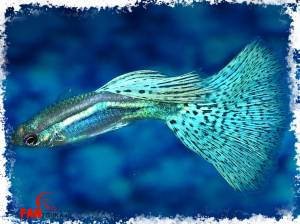
 Guppy
Guppy
I think many experts aquarium fish ok we will agree that the first place is given to the guppes.
Everyone probably knows these fish ... even those who have never seen aquariums. We can say that these fish are the fish of all children. the former USSR(were in all Soviet aquariums))). The fish is very beautiful and unpretentious. The tail fin is its beauty. The unpretentiousness of the fish lies in the fact that it can withstand "difficult conditions". I happened to see an aquarium with guppies without aeration, no filtration, no plants, no proper feeding etc. - horror, nightmare of the aquarist. Nevertheless, guppies managed not only to survive in such an aquarium, but even tried to reproduce. So scoffing at the fish is certainly not worth it !!! But their endurance and vitality is sometimes amazing.
GUPPI IS A SYMBIOSIS: BEAUTY, LOOKNESS AND SIMPLICITY + BELLOWS ARE BREEDING "LIKE RABBITS" BY ITSELF - YOU WILL ALWAYS HAVE AN UPDATE OF "AQUARIUM PAINTS" Read more about GUPPI here ...
2nd place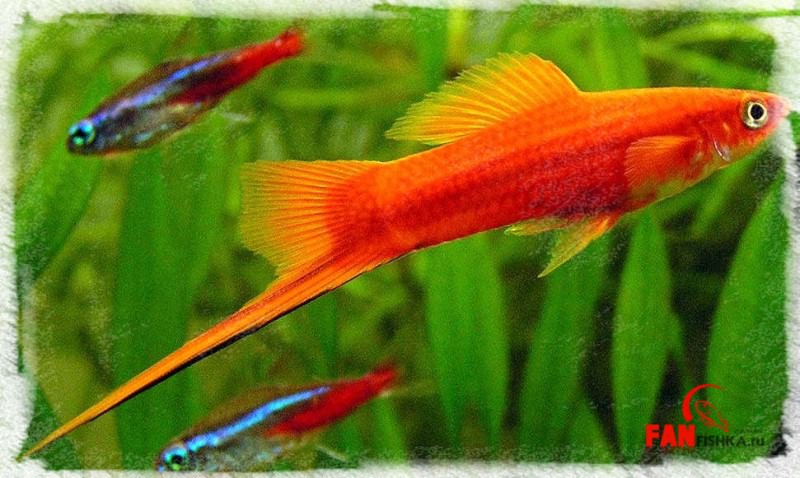 Swordsmen
Swordsmen
A very famous fish, as a result of persistent selection, a large number of swordtails of various colors and shapes have been bred. Males differ from females by the presence of a "sword" on the lower edge of the caudal fin.
Swordsmen are kept in a flock in a densely planted aquarium. Minimum aquarium size from 10 liters(but bigger is better). A good tank volume for a small group of swordsmen is 50 liters.
An interesting fact about these fish is that a female swordsman can "at some" moment become a male, i.e. change gender. This is due to the struggle for the survivability of the species.
3rd place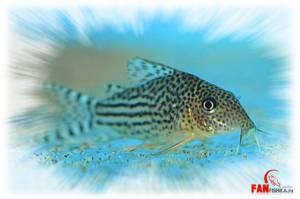 Catfish corridors
Catfish corridors
It is worth starting with the fact that everything aquarium catfish- are a priori unpretentious. Moreover, they are "orderlies of the aquarium world": they clean the soil and eat the remains of life. The corridors are selected from all catfish, because they, in addition to the gill, also have intestinal respiration, i.e. if the aeration is turned off, they will live for a long time.
Pisces are very peaceful, calm. They slowly swim along the bottom in search of food. In an aquarium, they are usually kept in a flock. The fish do not pose any threat to other inhabitants of the aquarium.
4th place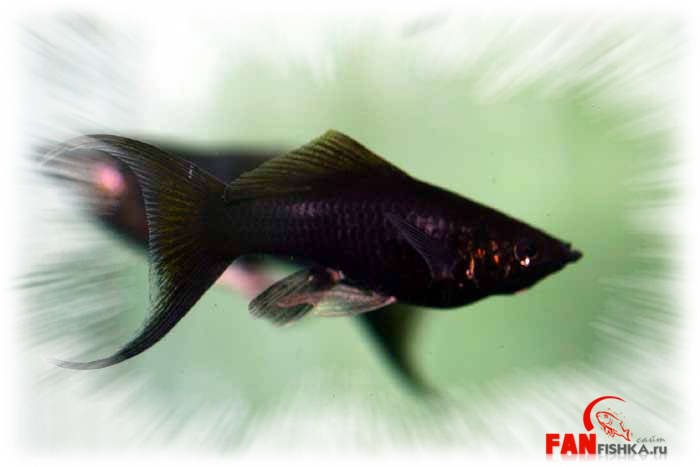 Mollies
Mollies
Moths, like guppies, are viviparous fish. Unpretentious and tolerant of bad conditions content. Nevertheless, they are more capricious than the “three winners”.
The fish is suitable for beginners and young aquarists. The fish are the most difficult to keep out of all the representatives of the family of platyceae - they are demanding on the conditions of keeping, they do not tolerate low temperatures well, some like "salt" water, like bright light, etc.
5th place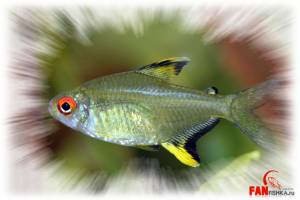 Tetras - harazinki
Tetras - harazinki
All tetras are small, nimble, not whimsical fish. However, they will not be able to survive in "Spartan conditions" as guppies. They need aeration and filtration. You can keep them in an aquarium in a group (from 5 individuals) with a volume of at least 35 liters of water.
6th place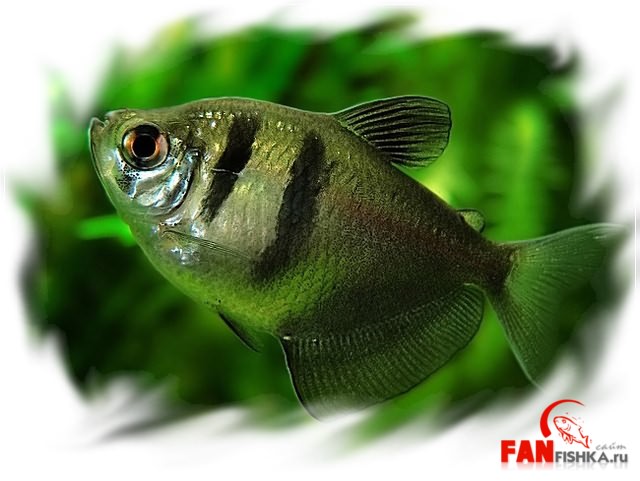 Terneces
Terneces
A very famous little fish. The fish are energetic, mobile. The fish gets along well with other types of fish. I somehow lived with thorns even with small cichlids. We recommend an aquarium with a volume of at least 30 liters of water, densely planted with plants. Aeration, filtration - yes!
7th place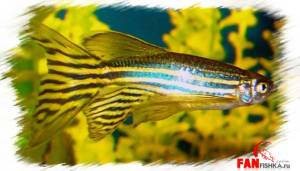 Danio (rerio, pink)
Danio (rerio, pink)
Starting from the 5th place of the TOP, all fish require unpretentious attention. Danks are different from them - agility and speed of movement... They can get along with many types of fish, even with fish of medium and high aggression: scalars, gourami and even small cichlids.
8th place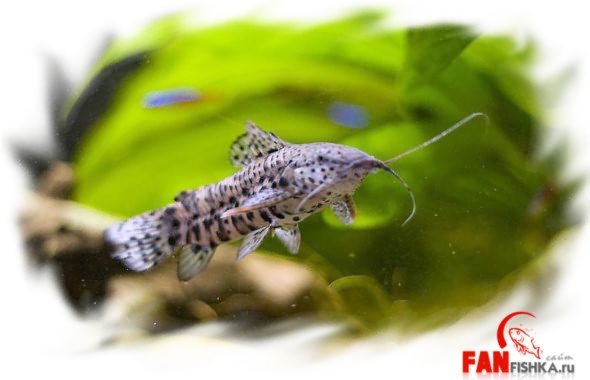 Torakatum
Torakatum
One of the famous large catfish of the aquarium world and excellent aquarium orderlies. Peaceful and unpretentious to the content. They can be kept in a common aquarium with thickets of plants and big amount shelters. The fish do not pose any threat to other inhabitants of the aquarium. Compatible with all types of fish. Only one hundred percent aggressors and predators are not recommended as neighbors.
9th place Gourami
Gourami
Gourami are medium-sized fish. We entered this TOP due to gill labyrinth - fish do not need aeration they breathe atmospheric air... Really peaceful fish, but sometimes aggression is shown. Some, separately taken individuals, are even very aggressive, here, as they say, how lucky. You can read more about GURAMI here ...
10th place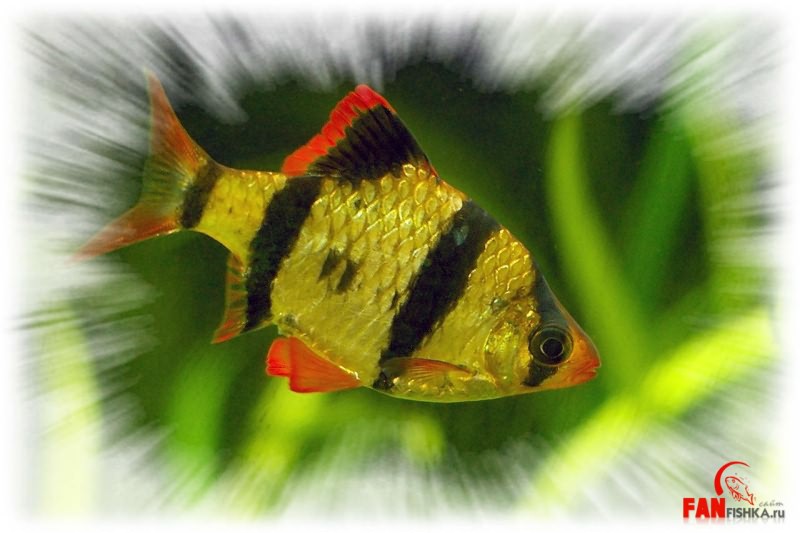 Barbus
Barbus
Barbs are schooling, small fish that can fend for themselves! Their If you decide to have barbs, I recommend to allocate a separate aquarium "barbusyatnik" for this. "Pirate" character, the ability to stand up for oneself - deserve 10th place. You can read more about BARBUSES here ...
Of course, the above TOP is conditional - always remember the words
Antoine Marie Jean-Baptiste Roger de Saint-Exupery
"We are responsible for those we have tamed"
We also recommend that you look at the colorful brochure "Popular species of aquarium fish" This brochure contains all the popular species of fish, with a description of the conditions of their keeping, compatibility, feeding + photos.
(to view or download, click on the picture)
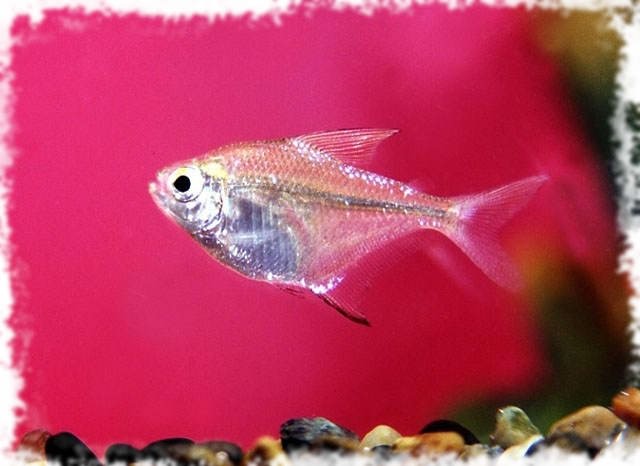
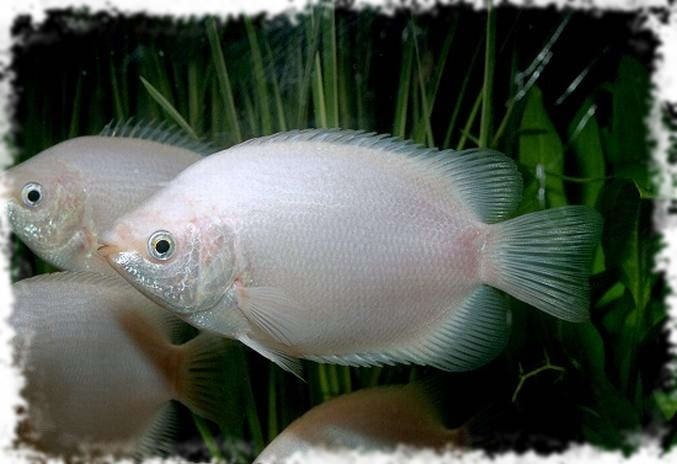
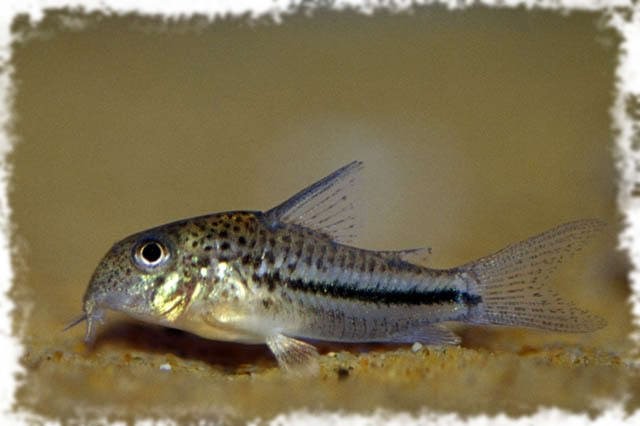
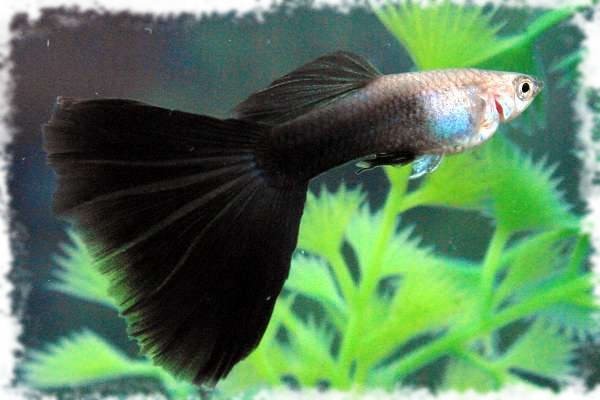
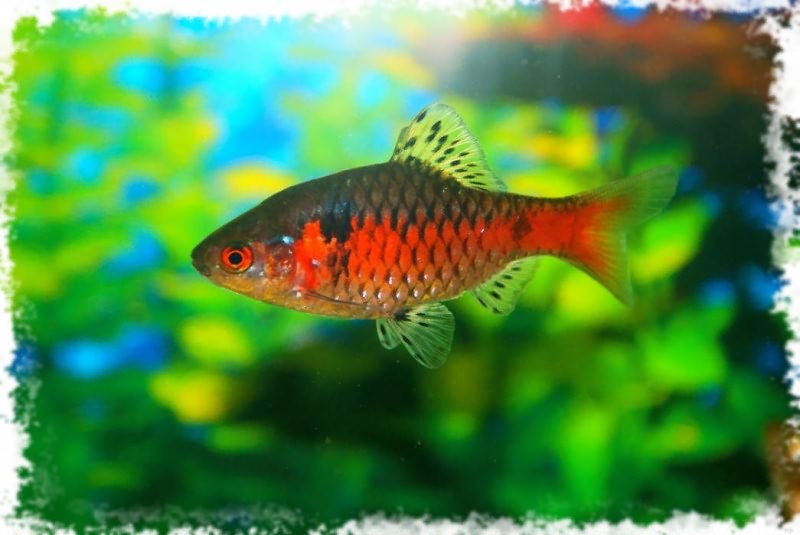
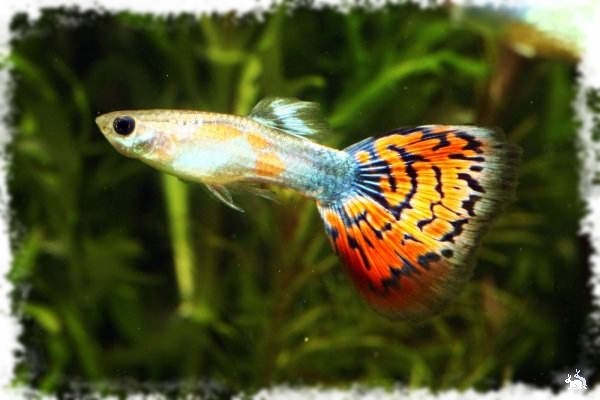
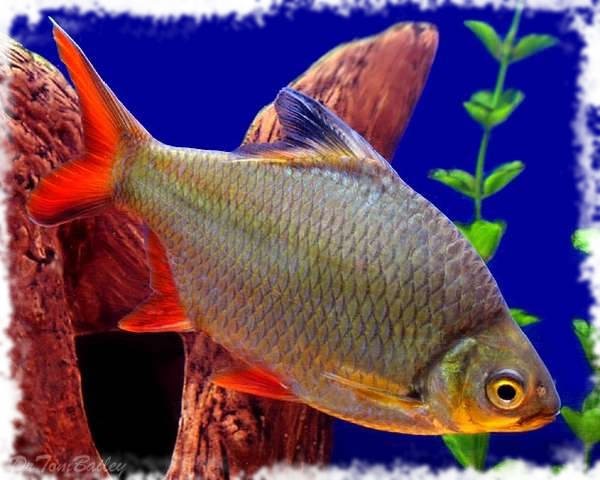
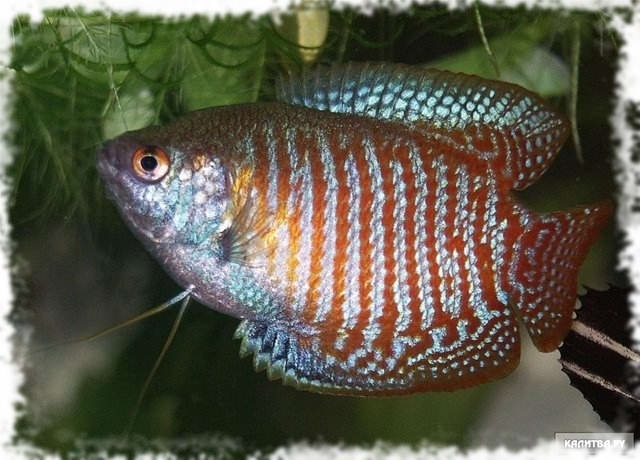
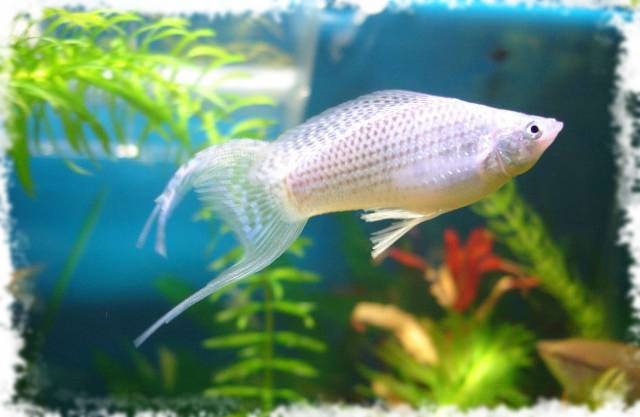
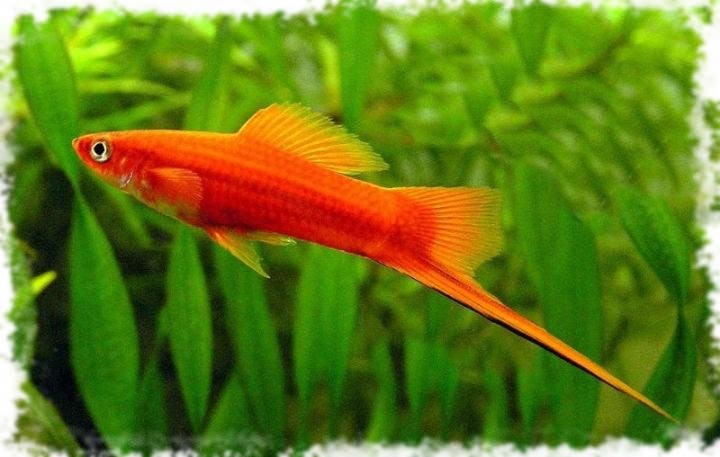
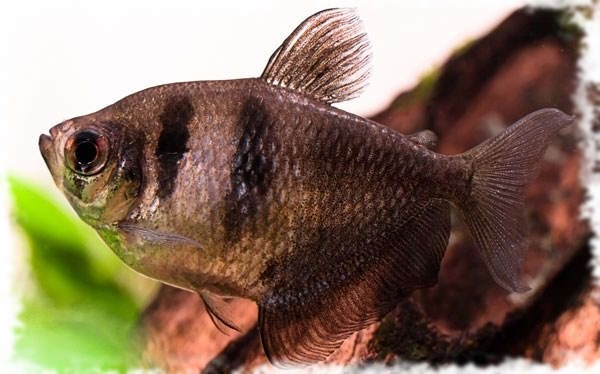
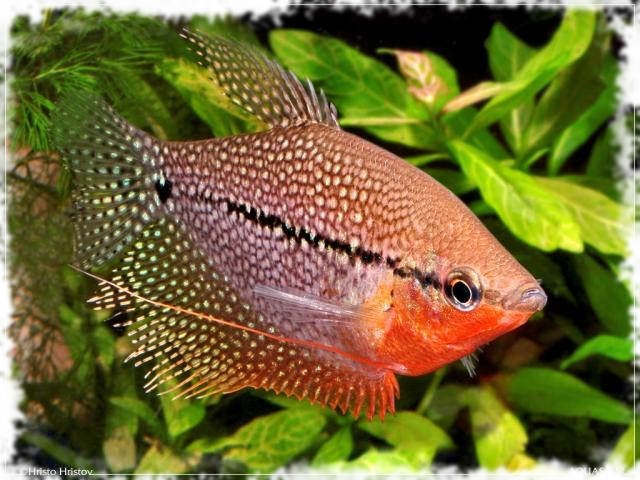
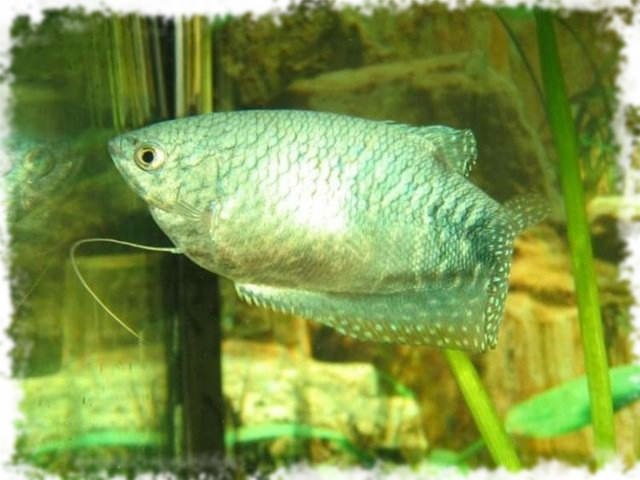
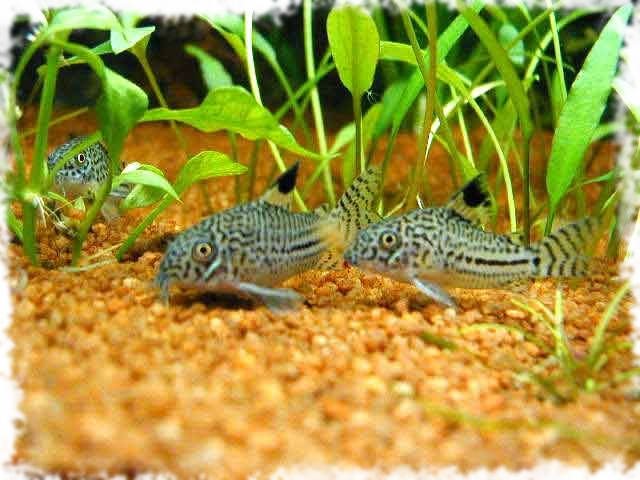
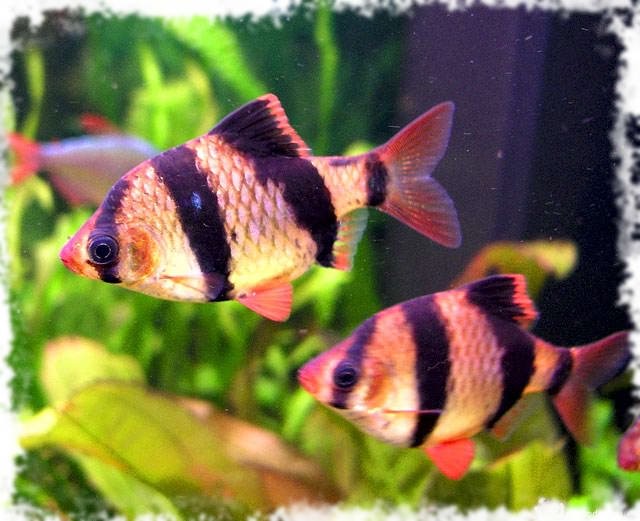
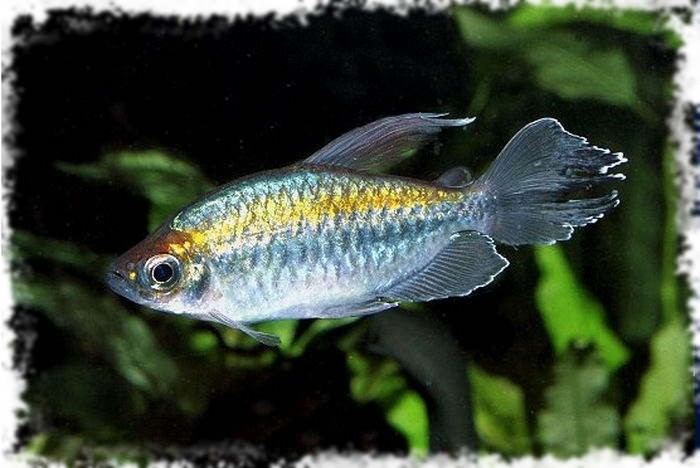
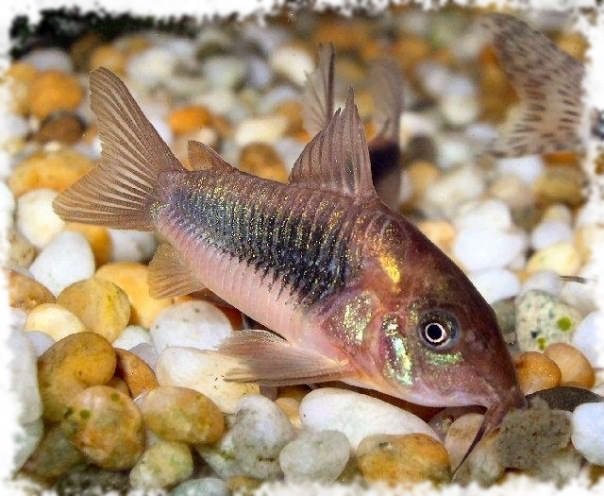
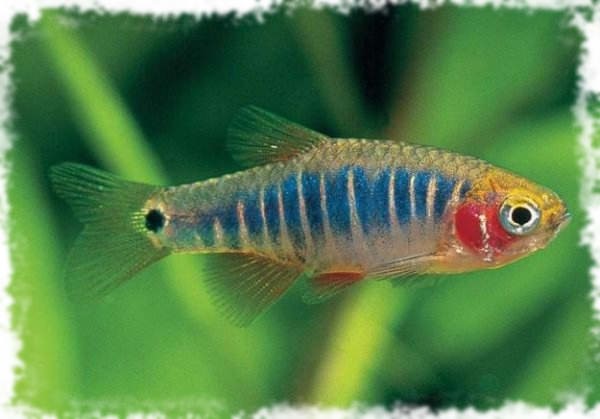
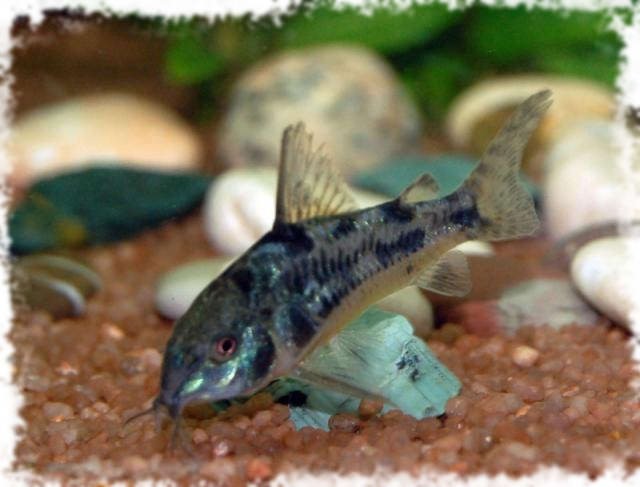
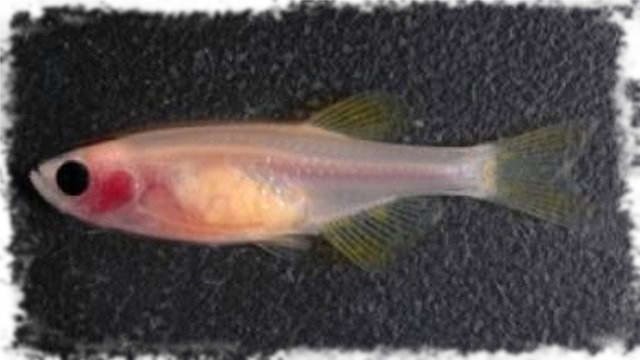
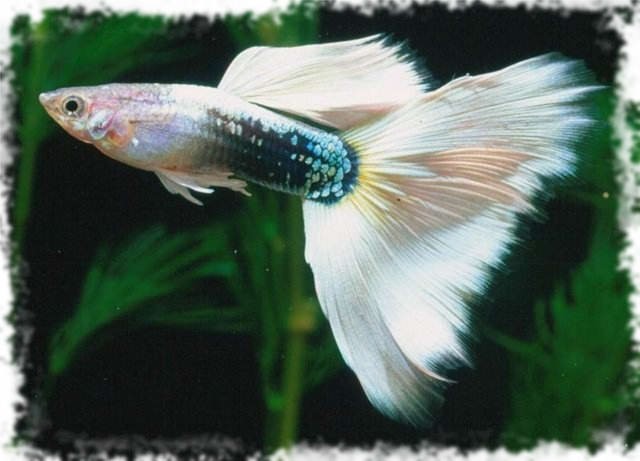
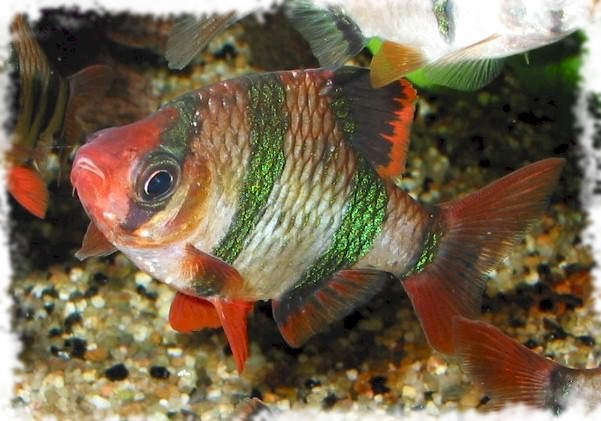
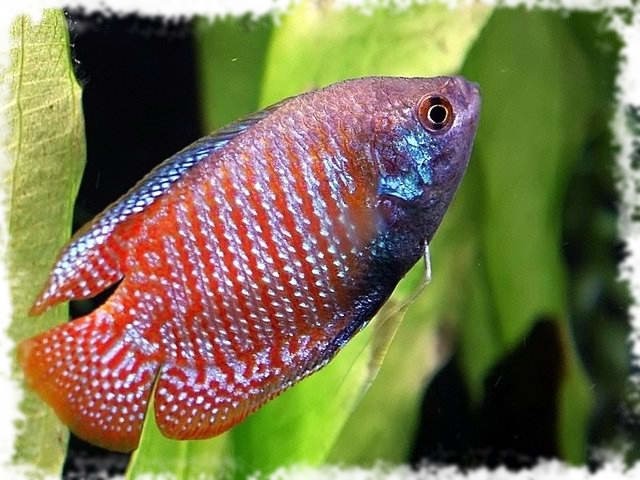
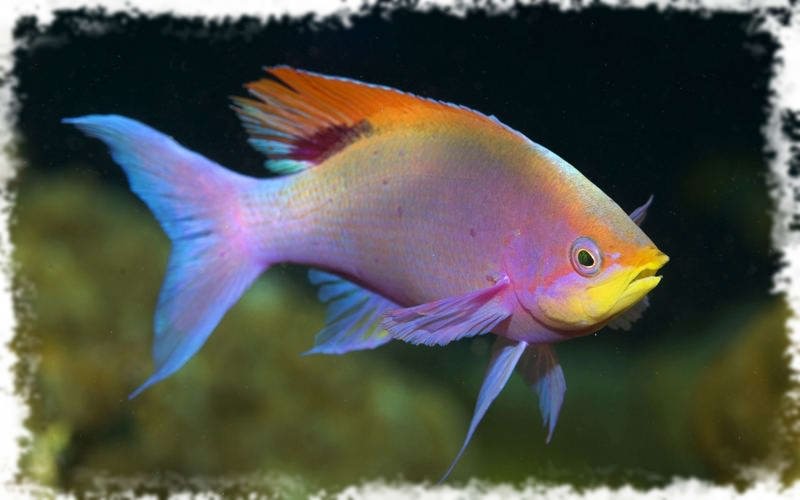
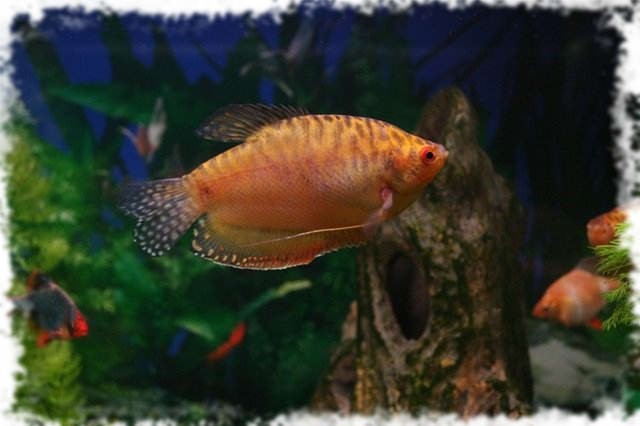
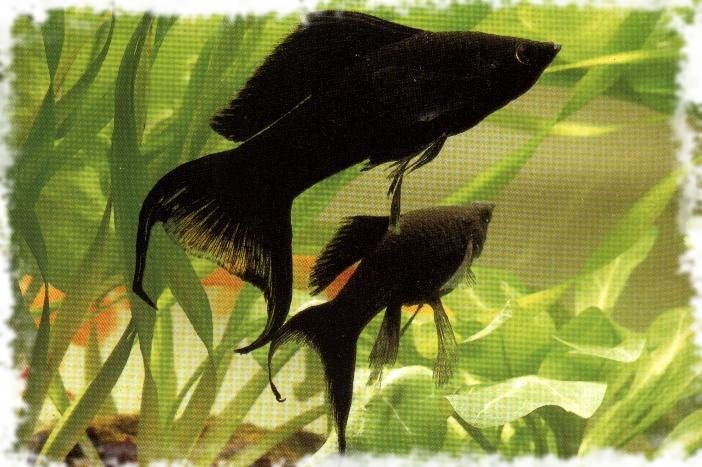
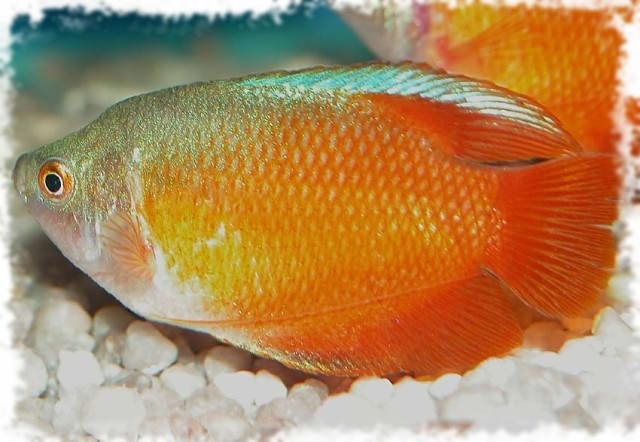
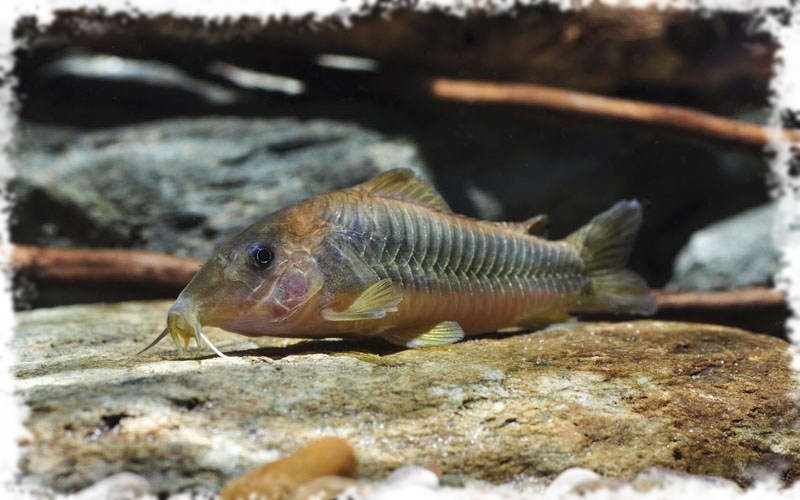
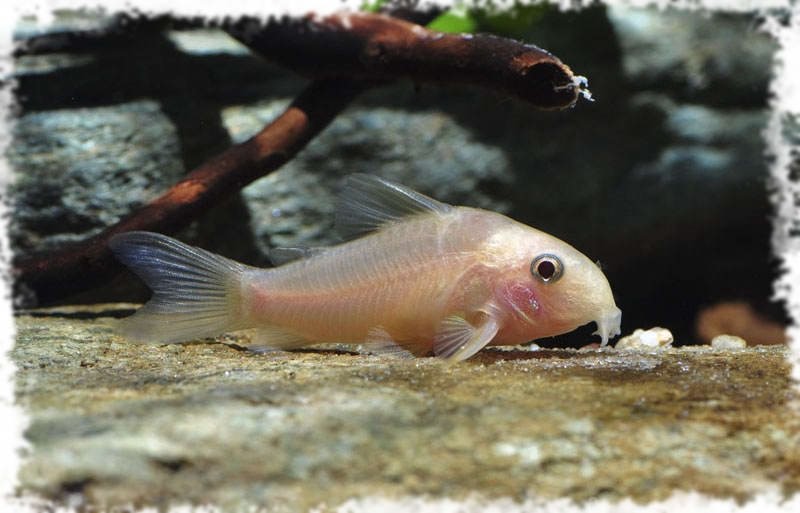
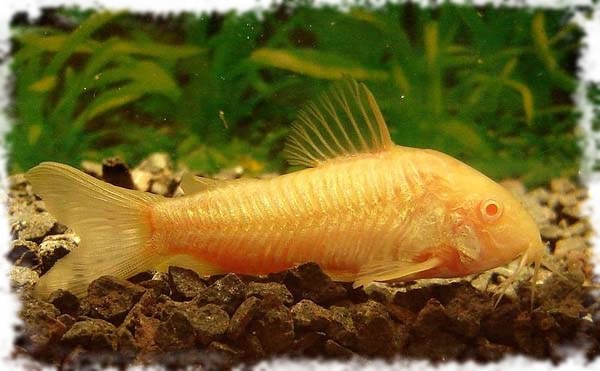
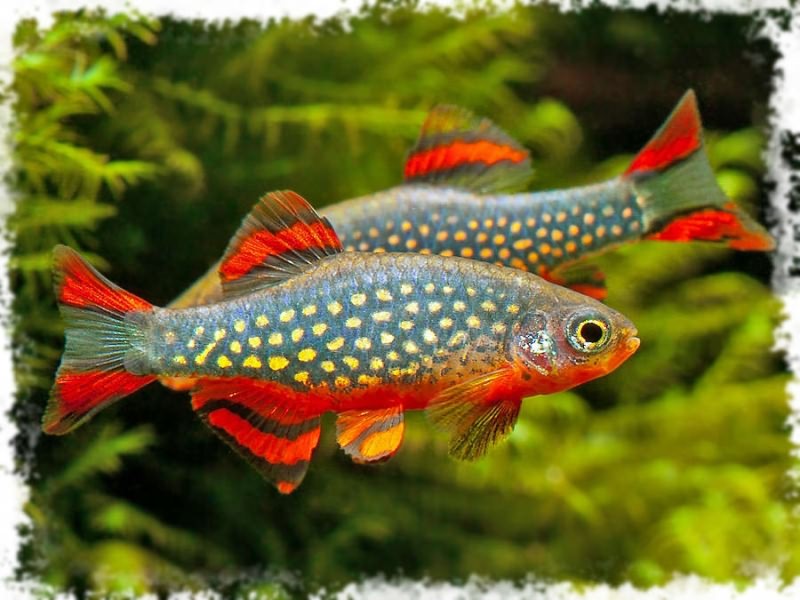
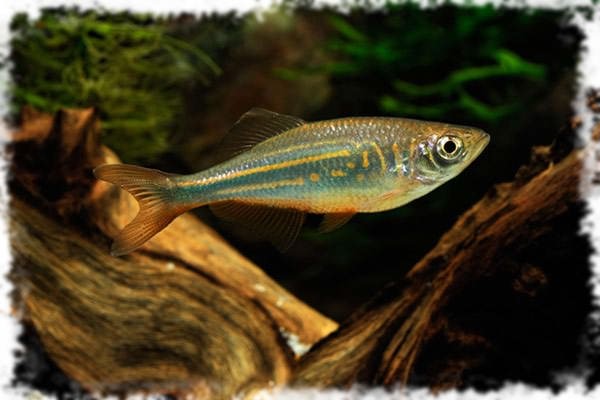
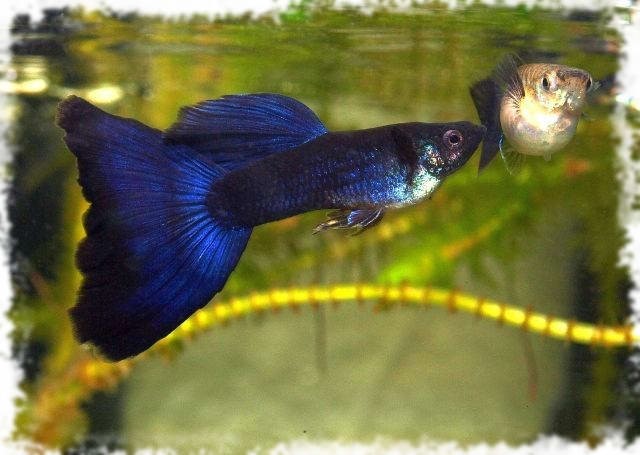
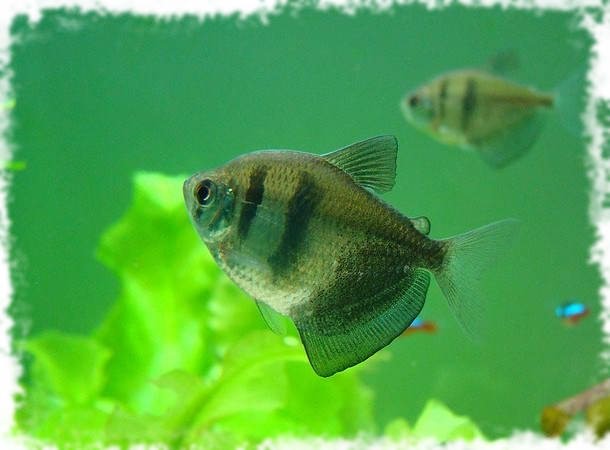
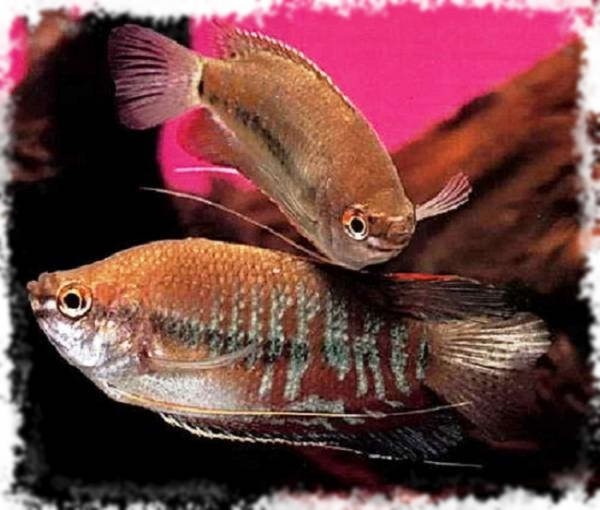
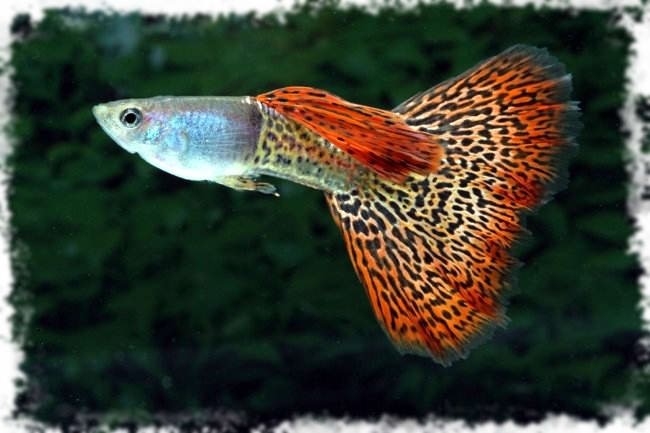
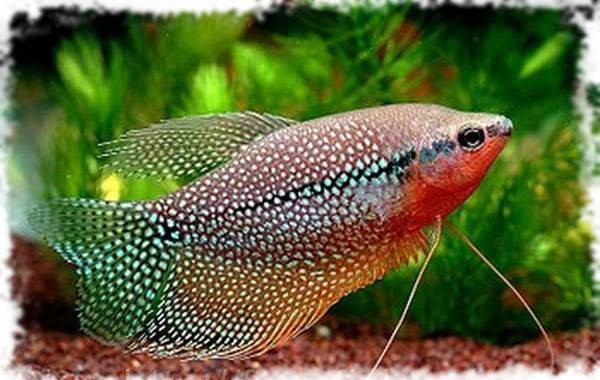
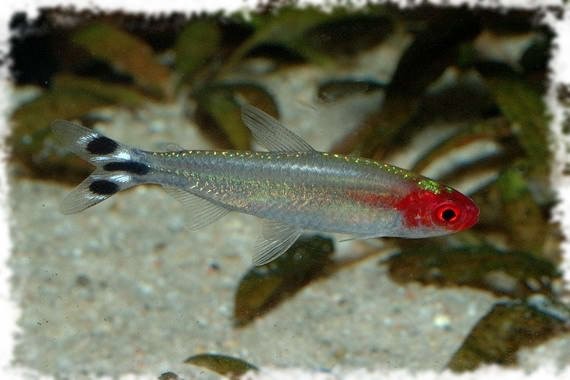
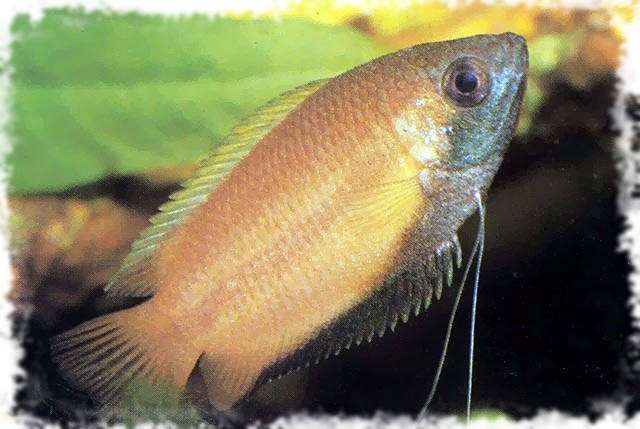
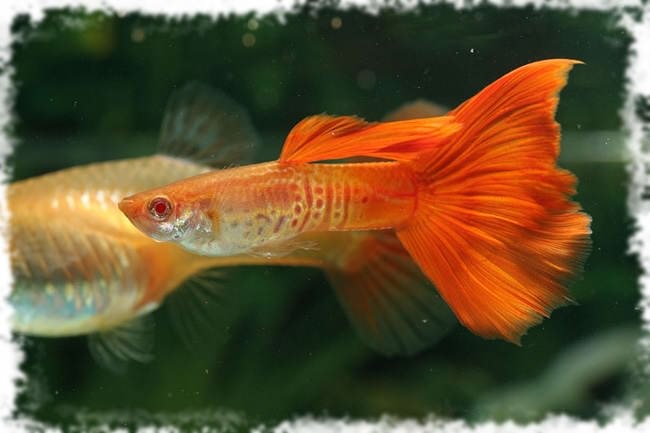
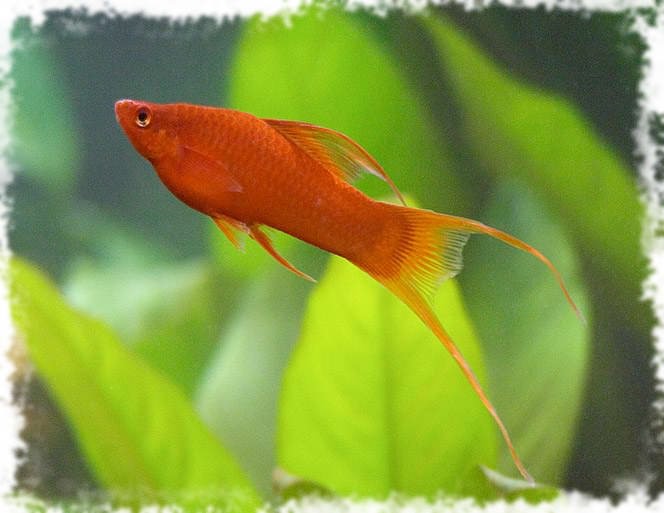
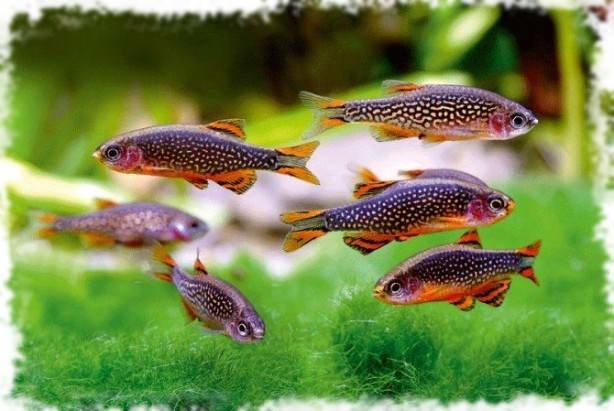
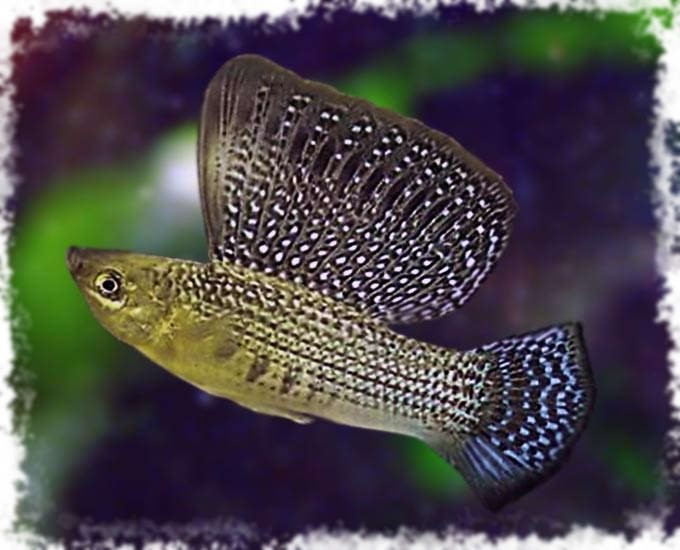
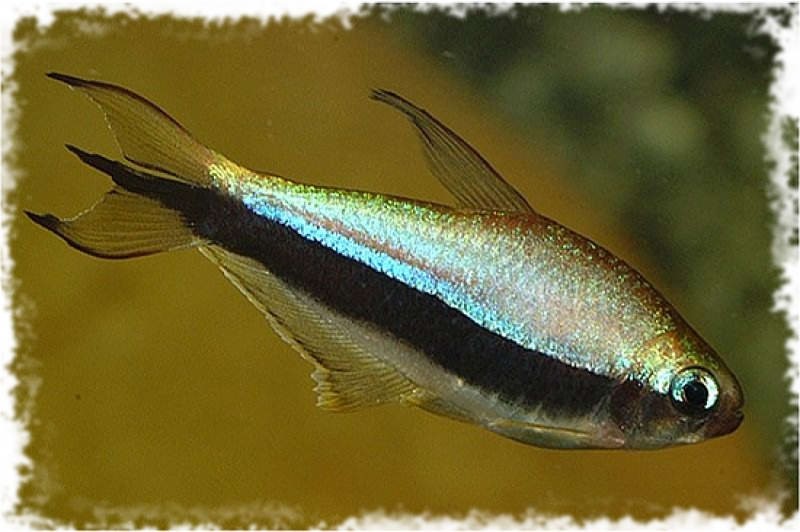
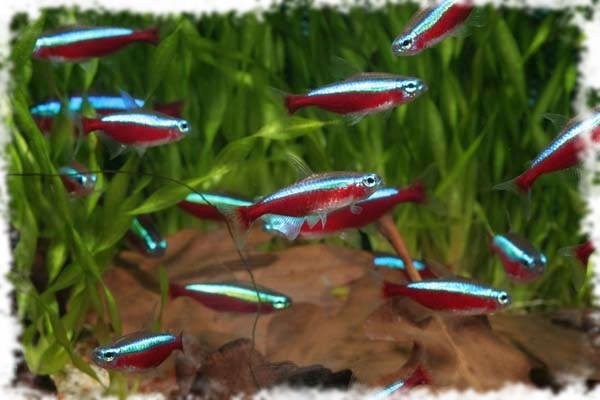
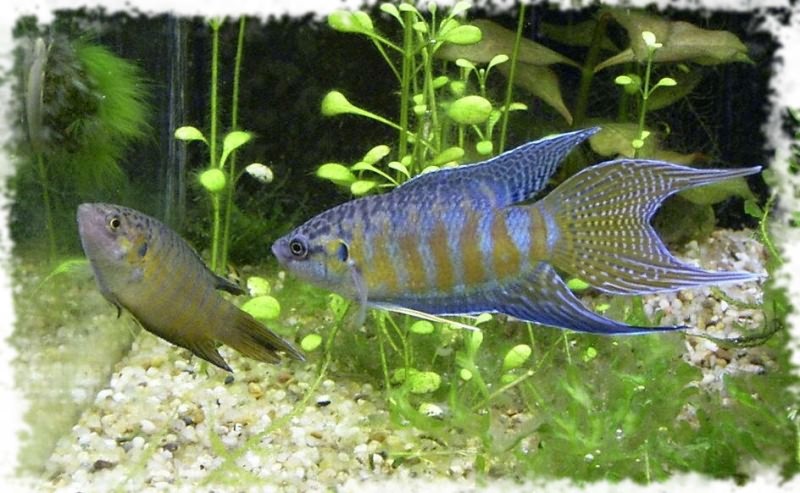
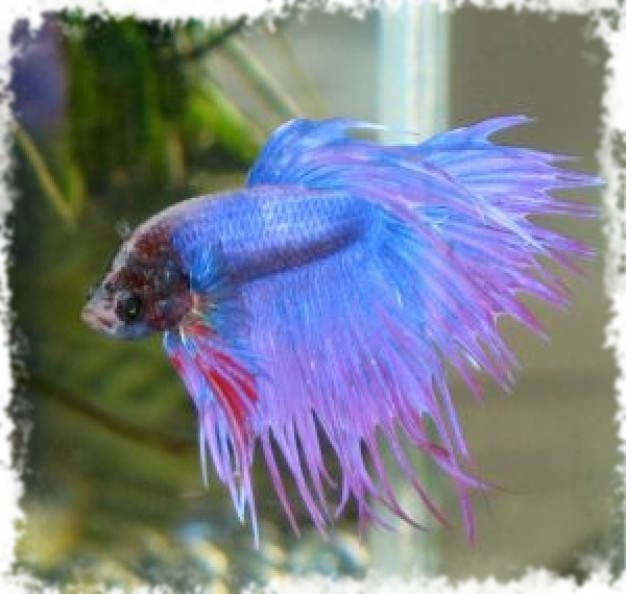
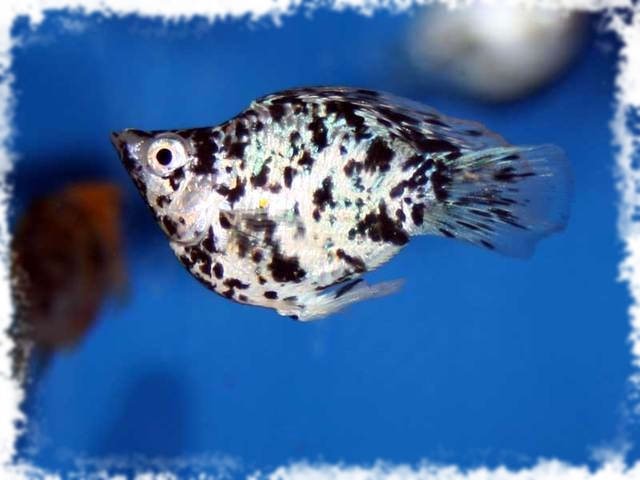
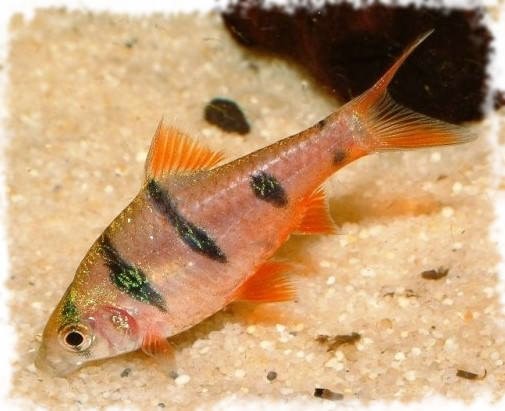
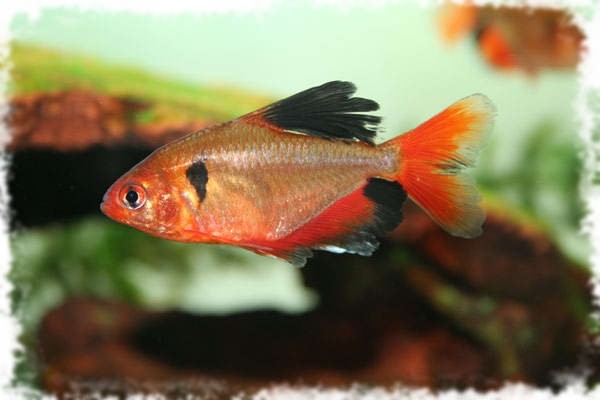
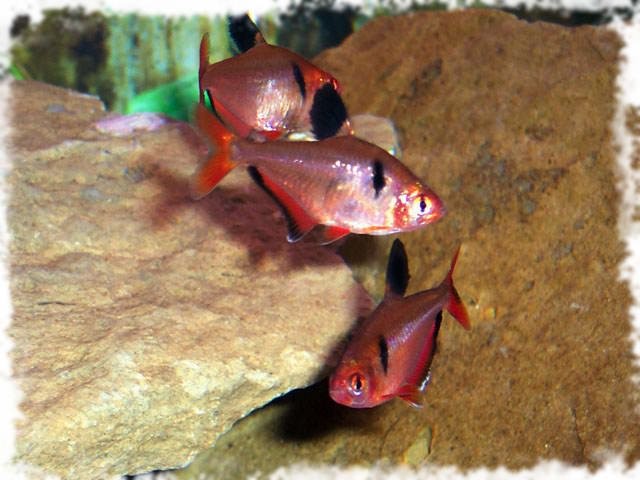
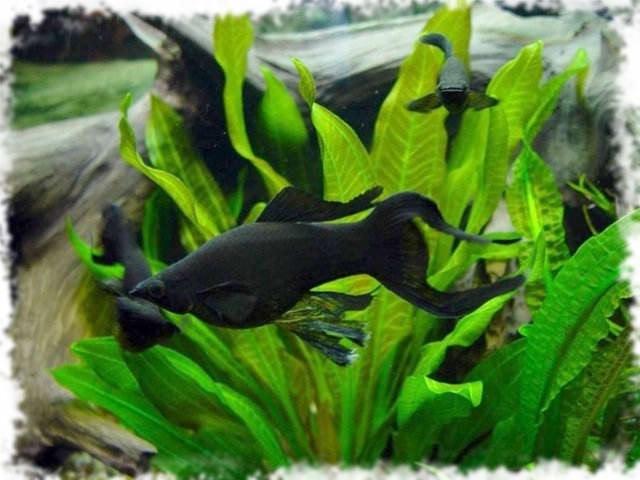
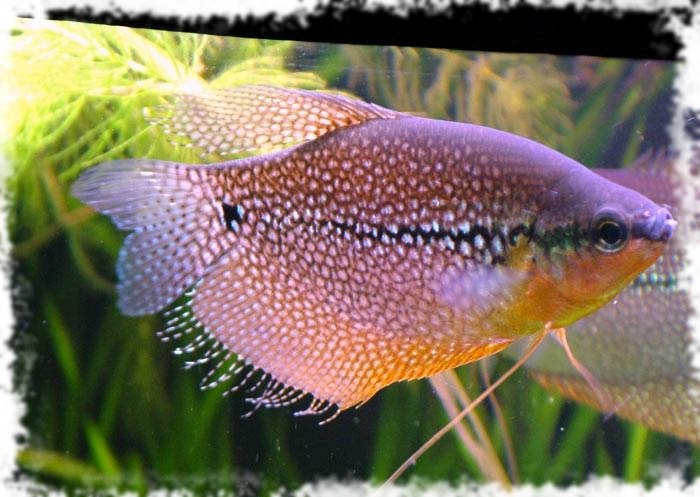
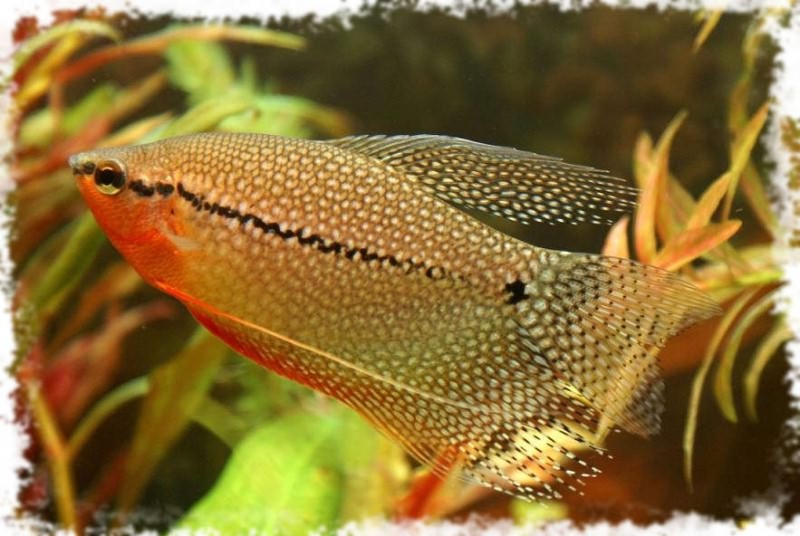
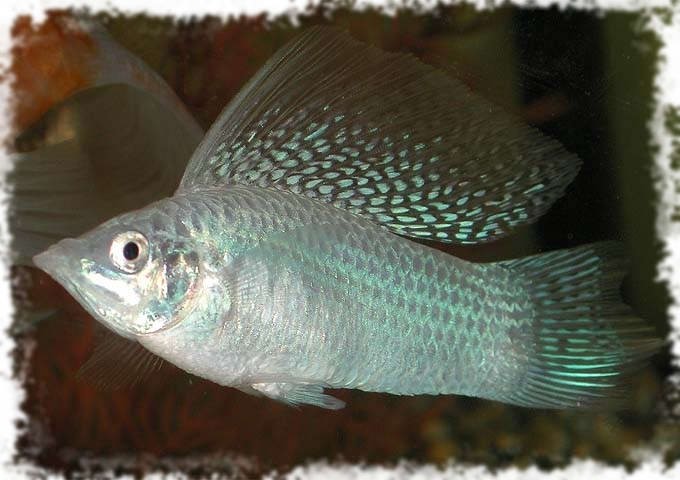
The aquarium, the volume of which reaches 50 liters, is considered small. If you want to avoid common mistakes when choosing fish, use the advice below from experienced specialists.
When purchasing a fish, ask the sales assistant what size it will reach when it grows up. Sometimes a small fish can turn into a predator over time, and significantly reduce the number of fish in your aquarium.
Support optimal mode in such an aquarium it is quite difficult, so you should not buy too expensive exotic fish, such specimens die first of all in the event of a violation of the ecobalance.
Calculate the optimal number of fish in the aquarium, based on the calculation - 3-5 liters of water per fish with an average length of 6 centimeters. Do not overload the aquarium with too many fish, they will feel uncomfortable.
Try to keep fish of the same temperament. If some fish are inactive, while others begin to rush around the aquarium, the first is unlikely to get food.
Make sure that the vital volume of the aquarium is evenly filled, that is, fish living in the bottom layer of the aquarium should be combined with fish swimming in the middle layer and fish located at the surface
The ideal fish for a small aquarium is the guppy. There is an opportunity to purchase about 15 fancy colored fish, and this will be enough for an aquarium of 50 liters.
Small aquariums are good for swordsmen different colors... Plants of red color, as well as spotted and chintz, have proven themselves well. Black mollies are more demanding on the composition of the water of the fish, for them it is necessary to add some salt to it. All these fish are viviparous, moreover, they require approximately the same conditions of detention. Spawning fish can also be placed in a small aquarium. Striped Sumatran barbs look very impressive next to dark green mossy mutant barbs. Small striped zebrafish are very unpretentious, veil-shaped cardinals look very beautiful.
Lovers of larger fish should purchase several scalar or pelvicachromis parrots. Any aquarium will be decorated with red, blue or ordinary neons, but these are quite expensive fish.
It is useful to plant ancistrus catfish in the aquarium, which have the ability to clean the walls of the aquarium with the help of a suction cup, as well as plants from green algal fouling.
A successful combination is the purchase of 5 ball carriers, 3 ancistrus catfish, 5 platies and 10 neons. 5 danios, 10 guppies, 3 swordtails, and a couple of speckled catfish will get along well. Another optimal combination is the presence of 4 mossy barbs, 2 scalars and 3 ancistrus catfish. The list goes on, the main thing is to follow the above tips.
Everyone decides for himself which fish to buy, the main thing is that they are combined with each other.
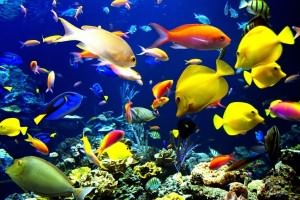
It is not customary in the aquarium hobby to start small. Small volumes create big problems, since a miniature system is devoid of inertia, and the biological balance in it is unstable. Nevertheless, small aquariums are gaining in popularity now. They are less expensive, compact, and amazingly beautiful when properly designed and cared for. But making a small aquarium enjoyable is not easy.
Small aquariums are considered to be less than 30-40 liters in volume, usually from 5 to 20 liters. They are often called nano aquariums (from the Greek 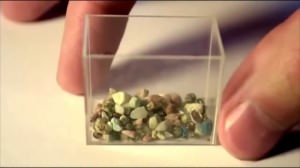 nano - "small, tiny, dwarf"), emphasizing with this term not only size, but also their modernity and manufacturability. There are also micro-aquariums, their capacity is 1-2 liters, and animals are not lodged in them, with the exception of some species of snails. The world's smallest aquarium with fish was created by the Omsk miniaturist Anatoly Konenko and his son Stanislav. They placed soil, a specially designed mini-compressor, small cladophora bushes and a few zebrafish fry in 10 ml of water.
nano - "small, tiny, dwarf"), emphasizing with this term not only size, but also their modernity and manufacturability. There are also micro-aquariums, their capacity is 1-2 liters, and animals are not lodged in them, with the exception of some species of snails. The world's smallest aquarium with fish was created by the Omsk miniaturist Anatoly Konenko and his son Stanislav. They placed soil, a specially designed mini-compressor, small cladophora bushes and a few zebrafish fry in 10 ml of water.
We will agree right away that we will not call a round ten-liter jar with a goldfish a nano-aquarium, since this is not an aquarium, but a mockery of fish and all the principles of aquarium keeping.
An aquarium, whatever size it is, is an equilibrium biological system, the inhabitants of which feel comfortable. To achieve this in a small amount is a whole science. But on the other hand, if it succeeds, the results can be simply amazing. Such aquariums, where a living biotope is reproduced in a tiny volume, resemble japanese art bonsai or scale models of luxurious cars: small, but all for real.
Of course, not all small aquariums are worthy of aquascaping contests or record books, but any of them should delight the eyes of their owner and create a comfortable environment for their inhabitants.
Nano aquariums are rectangular, cubic or close to it. They are usually covered with a transparent coverslip 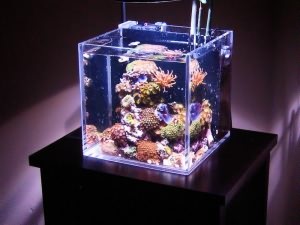 glass, which allows you to admire them from above. Place them away from drafts and direct sunlight and close to the outlet that will be required to connect the equipment.
glass, which allows you to admire them from above. Place them away from drafts and direct sunlight and close to the outlet that will be required to connect the equipment.
Equipment for nano aquariums needs in general the same as for large ones, that is, a filter (in some cases, a pump with an aerator is enough), lighting, if necessary, a heater, preferably complete with a thermostat, and a carbon dioxide supply system.
For those who do not have the experience and time for the selection of aquarium equipment, fully equipped nano aquariums are available for sale. The complexes of the Aqua El Shrim Set and Dennerle Nano Cube series were recognized as the best in terms of price-quality ratio.
And if you want to save money or are interested in choosing all the filling for your nanocube yourself, there is plenty to choose from.
For small aquarium the filter is vital. Since the equilibrium in this system is very fragile, and small deviations in the parameters of the aquarium water can be fatal for its inhabitants, it is necessary to minimize the risk of these fluctuations. Therefore, pumps without a sponge or with a small sponge the size of a matchbox are not suitable. Rather, they can be used, but only in aquariums with a very large number of living plants and without fish, with some invertebrates. However, with such a population, you can do without a filter at all or be limited to a compressor.
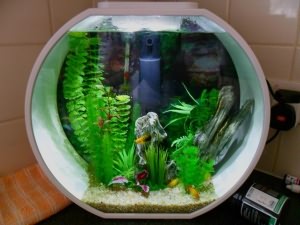 If there are fish in the aquarium, the filter requirements are very serious. It should have a large filler surface to create biofiltration, let 8-15 aquarium volumes per hour, but at the same time not create strong water flows that would damage plants, fish and crustaceans. In addition, small inhabitants of the aquarium should not get into its water intakes. And, of course, it should take up a minimum of space in the aquarium or be well decorated and fit into the landscape. Another optional, but very desirable condition is that the filter material must be taken out of the water for washing without dismantling the filter itself, this greatly facilitates the maintenance of the aquarium.
If there are fish in the aquarium, the filter requirements are very serious. It should have a large filler surface to create biofiltration, let 8-15 aquarium volumes per hour, but at the same time not create strong water flows that would damage plants, fish and crustaceans. In addition, small inhabitants of the aquarium should not get into its water intakes. And, of course, it should take up a minimum of space in the aquarium or be well decorated and fit into the landscape. Another optional, but very desirable condition is that the filter material must be taken out of the water for washing without dismantling the filter itself, this greatly facilitates the maintenance of the aquarium.
The following types of filters partially or completely satisfy these conditions:
In addition to these models, a variety of different homemade constructions- airlifts, Hamburg filters, plastic bottles with a fibrous or porous substance connected to a pump. There is only one requirement: water under pressure must pass through a sufficient volume of material that provides mechanical filtration and can serve as a substrate for bacteria participating in the nitrogen cycle.
An additional filter in a small aquarium is live plants, sometimes they are even placed in a hinged waterfall, making a phyto filter out of it.
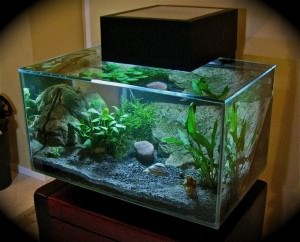 Due to the mandatory presence of living plants, the issue of lighting a small aquarium becomes relevant. There are almost never used lamps built into the lid, the lamps are installed at a certain height above the aquarium. Usually fluorescent or LED lamp... In general, the rule is this: if the lamps are fluorescent, then for unpretentious plants light should be 0.5 W per liter of water, for whimsical ground cover or having a reddish tint - 1 W per liter. If the lamps are LED, then the ratio of the lamp power and the luminous flux is different, and here they are already looking at the number of lumens. For undemanding plants, an illumination of 25 lm per liter is sufficient, for demanding plants - 50 lm.
Due to the mandatory presence of living plants, the issue of lighting a small aquarium becomes relevant. There are almost never used lamps built into the lid, the lamps are installed at a certain height above the aquarium. Usually fluorescent or LED lamp... In general, the rule is this: if the lamps are fluorescent, then for unpretentious plants light should be 0.5 W per liter of water, for whimsical ground cover or having a reddish tint - 1 W per liter. If the lamps are LED, then the ratio of the lamp power and the luminous flux is different, and here they are already looking at the number of lumens. For undemanding plants, an illumination of 25 lm per liter is sufficient, for demanding plants - 50 lm.
Plants for a nanoaquarium should be chosen depending on the lighting power and whether the supply of carbon dioxide is organized. If the light is bright, the soil is specialized, containing organic matter and CO 2, then any medium-sized plants can be planted, only the owner's preferences play a role here. In a more modestly equipped aquarium, they are limited to unpretentious and slow-growing plants.
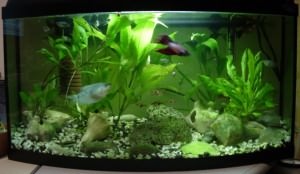 Lileopsis Brazilian, Hemianthus Cuba, Marsilia are used as ground covers. Blixa japonica, which is considered a ground cover in large aquariums, looks like a bush in small volumes.
Lileopsis Brazilian, Hemianthus Cuba, Marsilia are used as ground covers. Blixa japonica, which is considered a ground cover in large aquariums, looks like a bush in small volumes.
In addition, they grow different types anubias, cryptocoryne, pogostemons, rotal, ferns. Mosses are used to decorate driftwood, stones and equipment. Cladophora balls can often be found. In short, there is room for creativity, almost like in a large aquarium.
When choosing inhabitants for a small aquarium, first of all, of course, you need to pay attention to their size. Fish should not be more than 3-4 cm long, and if the aquarium is completely "nano", up to 15 liters - more than 2-3 cm. In addition, fish need peaceful, not too voracious, not territorial and quite unpretentious, at least if this is your first experience in nano aquarium. And, of course, they should be bright and variedly colored and active, so that it would be interesting to watch them.
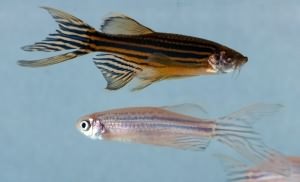
Zebrafish
A fairly large number of fish are suitable for these conditions. The most honorable place in nanoaquariums is occupied by representatives of cyprinids - zebrafish, microraces, boraras. The micro-collecting galaxy with its amazing coloration is truly the queen of small volumes.
From haracin fish in such an aquarium, you can settle neons and tetra amanda, from viviparous fish - guppies and platies. In addition, you can get small catfish, for example, a pygmy corridor or ototsinklus. Feel good in a small volume of cockerels.
It is better to take fish in flocks of 3-4 pieces (of course, except for pugnacious cockerels), so they will feel more comfortable. The stocking density of small fish should be approximately 1 fish per 2 liters of water.
In addition to fish, different types of shrimps, dwarf crayfish (they are incompatible with shrimps), hymenochiruses frogs perfectly live in the nano aquarium.
You can arrange a nano aquarium in different style... Iwagumi styles are popular among aqua designers - decoration with stones of different 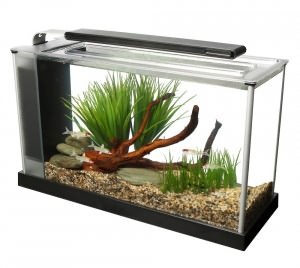 forms, ryyuboku - decoration with snags, vabicus - in the form of a bump with plants. But here the taste and preferences of the owner are decisive. For example, if the aquarium is in a child's room, it is quite appropriate to place a mermaid castle or a sunken ship and toy scuba divers in it. The main thing is that the decorations do not take up too much space (according to general rule, no more than a quarter of the bottom surface and half the height), hid the aquarium equipment and left room for plants and fish. In addition, if there are shrimp in the aquarium, keep in mind that any objects protruding from the water can help them escape from the aquarium.
forms, ryyuboku - decoration with snags, vabicus - in the form of a bump with plants. But here the taste and preferences of the owner are decisive. For example, if the aquarium is in a child's room, it is quite appropriate to place a mermaid castle or a sunken ship and toy scuba divers in it. The main thing is that the decorations do not take up too much space (according to general rule, no more than a quarter of the bottom surface and half the height), hid the aquarium equipment and left room for plants and fish. In addition, if there are shrimp in the aquarium, keep in mind that any objects protruding from the water can help them escape from the aquarium.
The soil in small aquariums is usually used in two layers: the bottom layer is a nutritious substrate, the top one is gravel, the total layer thickness should be 3-4 cm.
Caring for a small aquarium is not too time consuming, as long as it is constant. If about a safe two hundred liter jar you can forget for a month (do not clean and change water in it, but only feed the fish), and nothing terrible will happen, well, unless the beauty becomes a little less, then such a number will not work with a nano aquarium. You cannot stay for one day with the harvesting or slightly overfeed the fish, this can lead to irreversible consequences. Depending on the volume and population of the aquarium, a schedule should be drawn up for turning on and off the lighting, feeding the animals, changing water (usually they are carried out weekly at 1 / 3-1 / 2), and cleaning the bottom. This schedule must be strictly observed. Most importantly, a small aquarium requires close supervision and immediate action is taken at the slightest sign of imbalance. It is highly recommended to use water quality tests initially after launch to track at least ammonia and nitrites.
Of course, a small aquarium in an apartment or office is not just a piece of furniture, it requires care and attention, but subject to the correct selection of equipment and inhabitants and the implementation of simple rules, it is quite an affordable pleasure even for a person who is not knowledgeable in aquaristics.
Most hobbyists can afford to set up aquariums just not large sizes... Such models, with a capacity of up to 100 liters, are perfect for the interior of the apartment. These small tanks are easy to maintain and cost-effective, as are the small aquarium fish that inhabit them.
Fish farming is fun and at the same time, difficult process, the main thing in which is the result, namely the contemplation of the colorful living underwater world. The advantages of large aquariums in this sense are high, however, compact versions can also successfully fulfill this decorative function. It all depends on how well you select its inhabitants - the smallest fish.
An excellent option is breeding the most persistent fish - guppies. They are not the smallest, but they demonstrate high vitality and are the most hardy of the flock inhabitants of the home "reservoir". Your aquarium will be filled with bright colors, thanks to the main beauty of these schooling fish - the caudal fin, especially if you purchase interesting specimens. A flock of 15 - 20 fish will color your aquarium with bright lights.
A great solution for settling a small aquarium will be swordsmen, which got their name due to the fact that a xiphoid process appears on the caudal fin of males during puberty. Feeding the swordsmen will not be difficult, because a variety of food suits them: dry, live, and frozen. You should not breed them in aquariums with a capacity of more than 50 liters, because swordsmen in such conditions can grow up to 10 - 12 cm. perfect recipe to breed them: run a company of 15-20 waterfowl in 50 liters of water with a temperature of 20 - 25 and, voila. Your eye is already delighted with the magnificent red, black, green and even spotted and brindle representatives of this genus.
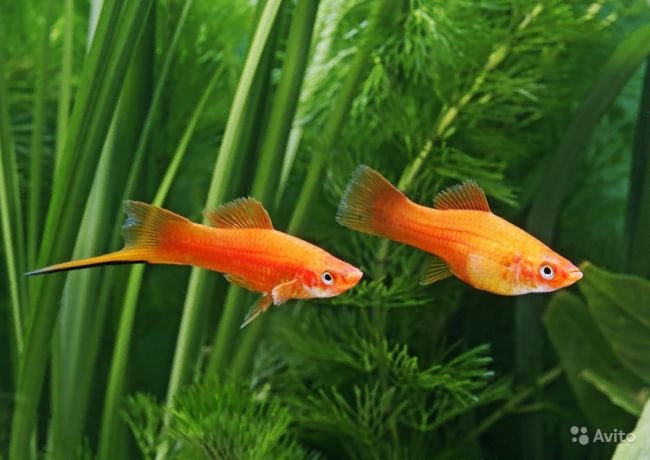
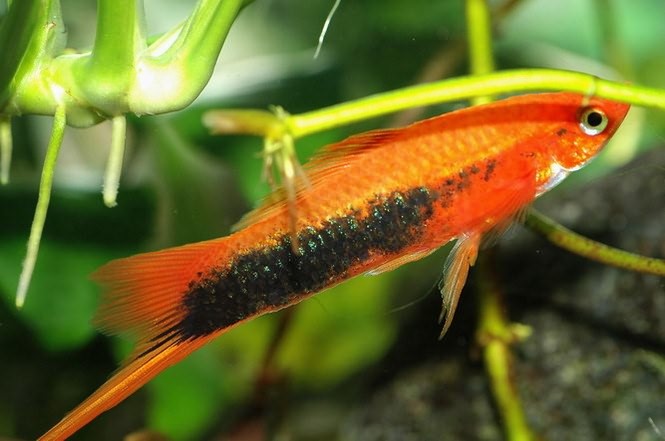
A flock of 10 miniature mollies of an elegant black color will look very interesting. However, such sophisticated beauty requires better care. The guarantee that they will give you joy from their contemplation is bright light and periodic salting of water, maintaining the temperature at least 20 ° C.
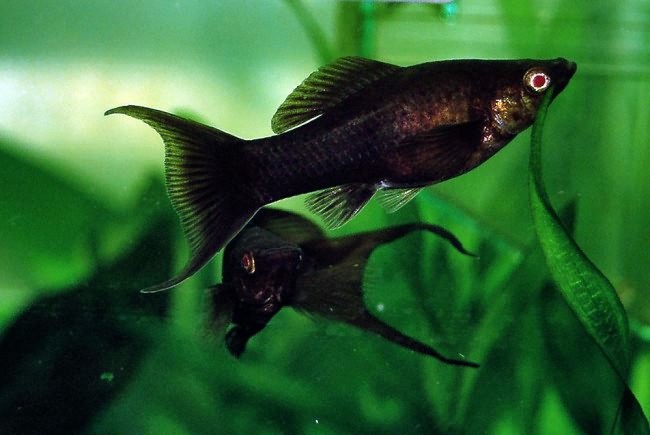
Among this type of aquarium pets, barbs (Sumatran, fire, black-striped ruby, tiger) are widespread, which prefer live food and grow up to about 6 centimeters. They are quite unpretentious, but they should be purchased in pairs. These smallest aquarium pets cannot be lodged with relatives of the veil forms because barbs are able to nibble on their fins.
See how the barbs look live.
The presence of the smallest aquarium fish - zebrafish or zebrafish inle will be effective. These most active and very playful small schooling fish prefer live or dry food, and their size reaches 3 - 5 centimeters. Unfortunately, excessive mobility of waterfowl is dangerous for them. Often zebrafish jump out of their pool, so only closed aquariums are suitable for growing them.
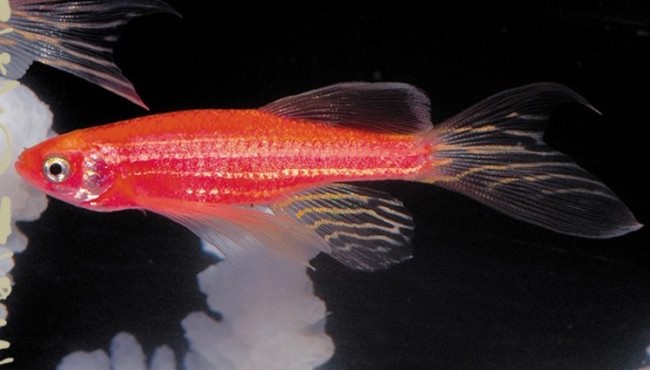
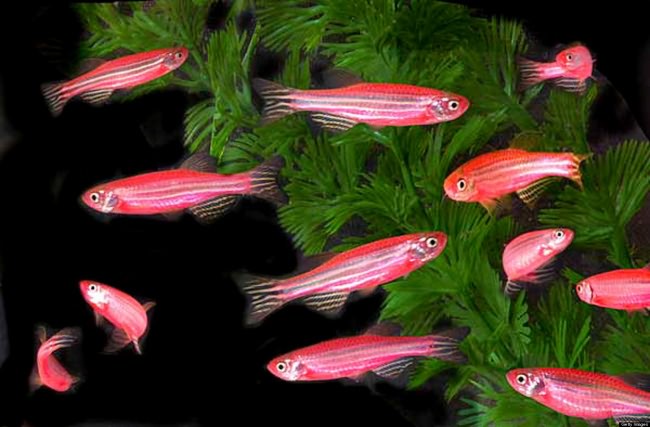
Talking about the smallest fish for breeding, one cannot but mention the well-known neons. These smallest inhabitants of indoor ponds are famous for their amazing color, or rather the neon glowing strip that runs through the entire body. Like all small fish, neons are schooling, so it is worth settling them in groups of 10 or more.
Look at the neon aquarium.
Whichever schooling fish you choose, it is very important to understand that their attractive colorful appearance and cheerfulness depend entirely on you. It must be borne in mind that the minimum permissible volume of water for each instance cannot be less than 3 liters. Too many water dwellers will turn your source of inspiration and positiveness into a kind of "communal apartment" and will not have the best effect on their behavior. Maintaining optimal temperature, weekly water changes by 20 percent, availability aquarium filter, aeration and suitable food - these simple procedures will help you to enjoy the contemplation of the splendor of the bright colors in the aquarium.
And here's another great selection of nano fish - take a look:
Is it difficult to keep aquarium fish? This question is often asked by novice hobbyists. They are afraid that they will not cope with the care, feeding, settlement of pets. Like any living creature, an aquarium fish requires attention and care, but how to create comfortable conditions life for her, if you don't know enough about the aquarium business? In this case, unpretentious aquarium fish can become your pets. They are easy to keep, unpretentious fish are considered very hardy, tenacious, get used to humans. If you are very busy, and you do not have enough free time to care for animals, then the most unpretentious aquarium fish will significantly reduce the time spent in the aquarium.

What unpretentious aquarium fish are good for a beginner who does not have much experience in maintaining an aquarium? When there is a desire to create good conditions content for your pets, you can choose small and beautiful fish with a peaceful disposition that can live in not very capacious tanks.
Guppies are one of the most popular decorative pets in the aquarium. Outwardly, they are very bright, cute, have a beautiful ponytail. Can be kept in small tanks from 40 liters, they are able to tolerate changes in water parameters. Some guppies can withstand the lack of filtration, aeration, plants, although such a settlement is strongly discouraged. Guppy fish are fertile, viviparous. They get along well with small and peaceful fish. For this reason, they have been popular in our country for many years. In addition, the variety of colors is amazing - you can choose a flock of fish of different colors, whose offspring will be even more colorful.
Watch a video describing the maintenance, care and reproduction of guppies.
Swordsmen - they are easily recognizable by their caudal fin, which in males ends with a "sword" at the lower base of the tail. There are also many varieties of swordsmen: color variations, sizes, demeanors prove that these are very interesting pets. The main advantage is that they are hardy, livable with many ornamental fish, and do not spoil the aquarium decorations. It is advisable to settle in a 20-50 liter tank, where there are many shelters and dense vegetation. Swordsmen can stand up for themselves - they can be settled with active fish that like to bother their neighbors. Swordsmen are tenacious also because the female of this species suddenly becomes a male, which saves her in a critical situation.
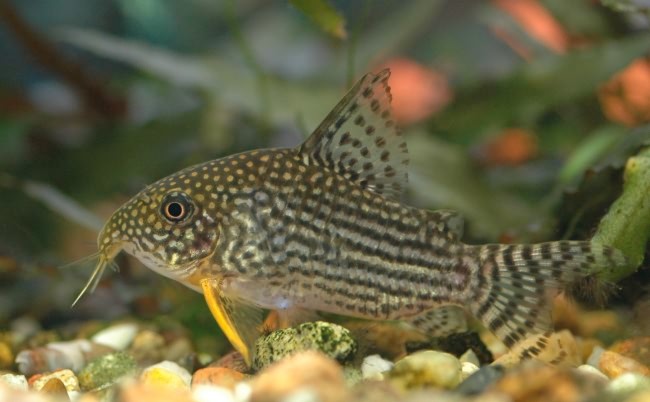
Mollies are viviparous fish of the Pecilia family. Relatively hardy, withstand small changes in water parameters. However, their body does not withstand poor biological stress well - dirty water, low water temperature, fresh water. They prefer salted ponds and bright lighting. Some mollies can come into conflict with swordsmen, barbs. The character is peaceful, but unpredictable.
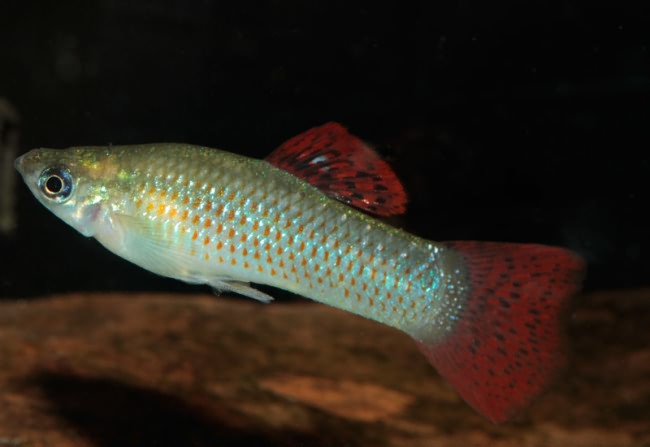
Tetras are another popular fish of the Kharacin family. Unlike corridors and guppies, they will not be able to survive in strict conditions of detention - they require a lot of dissolved oxygen in clean water. Schooling fish can be settled in a common tank with a volume of 35 liters or more, in a flock of 5-6 individuals.

Gourami are easy-to-keep fish, suitable for beginners. They need portions of atmospheric oxygen, so aeration will have to be monitored. Gourami know how to stand up for themselves, eat live, frozen and plant food. Sometimes gourami can show aggression towards fish of their own species.
See how to keep pearl gourami.
Barbs are pets that are easy to care for and maintain, but with what character! Considering that they are schooling fish, they can get other neighbors, especially bright ones and with lush fins. These are the pirates of home aquariums, they can disturb even large cichlids, they are not suitable for a small general aquarium. The advantages of barbs are endurance, livability, beautiful appearance.
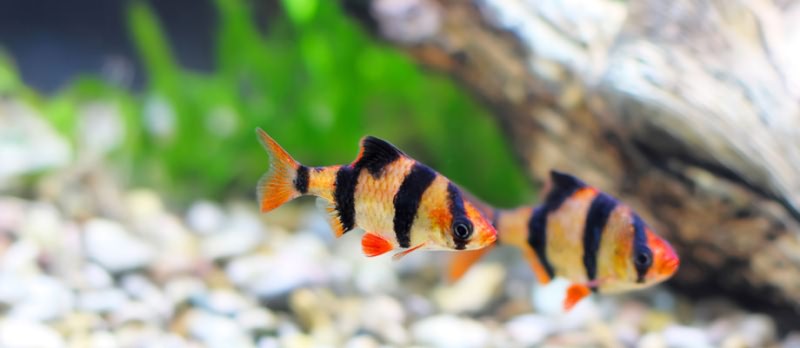
The most famous aquarium fish, which have relatively large body sizes, are members of the Cichlid family. Not only are they very beautiful, but also peaceful, interesting, quick-witted. Cichlids quickly get used to humans, they can feed from the hand. They form a couple from a young age, skillfully look after their offspring. Representatives of this family common in domestic aquariums are freshwater astronotuses, scalars, discus, African and South American cichlids. The size of cichlids is from 15 to 30 cm, therefore, they require settlement in a spacious tank with a volume of 100 liters or more. They get along well with some peaceful fish, but they differ in territorial behavior. They tolerate changes in water parameters, but not abrupt. There is one "but": some types of cichlids cannot be fed with tubifex and bloodworms, it is harmful to them. This point should be taken into account when settling in a common tank.
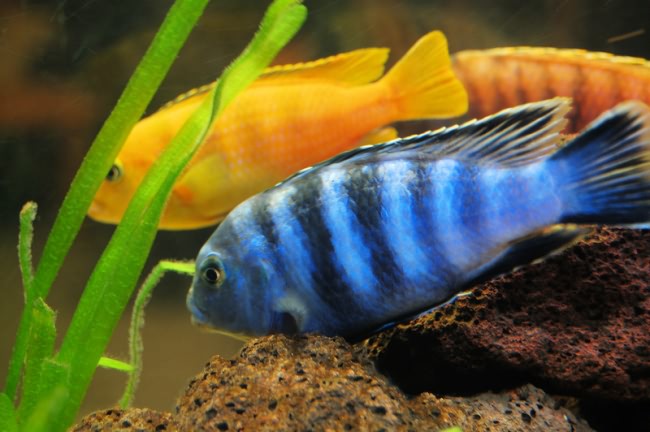
A large bright aquarium, in which the most amazing and unusual fish frolic, is the dream of most aquarists. But, alas, not everyone manages to do this by different reasons, whether it be housing conditions, financial situation or lack of time. For those who yearn for the aquatic kingdom in their home, small aquarium fish in a small aquarium are ideal.
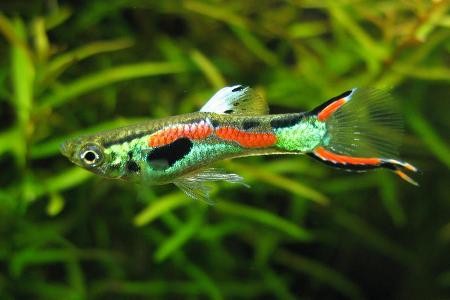 Dwarf guppy
Dwarf guppy What kind of aquarium fits the small category? Of course, there are no specific numbers or characteristics. The shape can be any - rectangular, cubic or round, but the volume can be set from about 10 to 20 liters.
In general, small aquariums require less investment and effort. Naturally, even in a small apartment, a properly chosen aquarium will not take up much space and will not look like a bulky and ugly structure in the middle of the room. If you fantasize a little, you can very organically fit a tiny container into the interior and make it, say, part of your workplace. The contemplation of such a living corner calms, adjusts to a peaceful and calm mood.
But, on the other hand, even the smallest aquariums have a lot of difficulties in care. Many people buy such designs for children, believing that caring for them will not be difficult. This mistaken stereotype leads to the imminent death of the aquarium. The fact is that a container of a small volume is just more susceptible to temperature changes and the threat of pollution. Any aquarist will attest that it is more difficult to create a complete and sustainable biological system in a small container. This is not easy even for an experienced aquarist, let alone a beginner.
When planning a small aquarium, it is better to purchase all the complete set at once: lighting, filter, heating. Fish in such an aquarium should be chosen not only small, but also quite unpretentious, which can withstand noticeable fluctuations in the environment, which are possible at the very beginning of keeping.
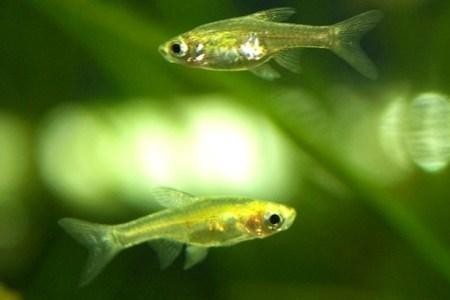 Green horadandia
Green horadandia Although most small fish are quite unpretentious, grooming in the early stages of their life will be troublesome. At first, you will need to change the water frequently to stabilize the bacteria. A standard water change should be carried out every 3-4 days, while at least a quarter of the volume should be updated.
Do not place this aquarium near a window: Sun rays will provoke the growth of algae.
A few words about the form. When it comes to a small aquarium, most aquarists say unequivocally: just not round! Curved walls in a small container strongly distort the image of the fish, and at the same time, strong distortion external environment will also become stressful for baby fish. From a practical point of view, it will be very difficult to clean glasses of this shape.
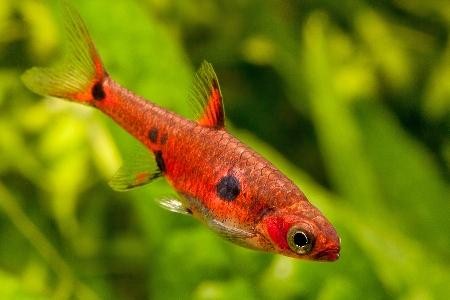 Dwarf rassbora
Dwarf rassbora There are some simple rules for choosing small fish in small aquariums. All of them take into account both the features of the fish themselves and the specifics of the small volume capacity.
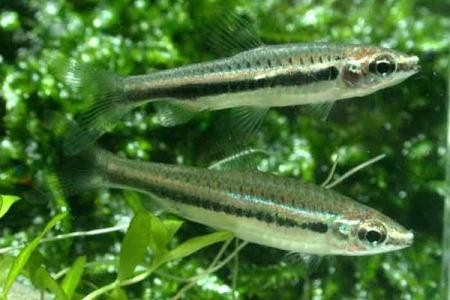 Nannostomus nitidus
Nannostomus nitidus Although at first glance it may seem difficult to find fish in a small aquarium, there are many types of crumbs that will perfectly take root in your aquatic world... Consider a few of the most popular unpretentious species small fish.
Schooling fish that feel more confident in large groups... It is interesting to watch them, they are unpretentious in care (perhaps these are the most famous fish, which beginner aquarists prefer to start). Adult guppies grow to a size of about 3.5 centimeters, and they need a sufficient number of plants - with shelters, the fish feel better.
They reach a length of 3-4 centimeters. These fish love all kinds of shelters and houses, so do not forget to place small caves when setting up your aquarium. For these fish, an aquarium of 15 liters or more is suitable; it is better to keep them in a small group.
Like most crumbs of fish, it has a timid disposition, they feel safe only in a flock and near shelters. Adult horadandia is only two centimeters long. It is advised to keep these fish in a group of about 12 individuals - the larger the flock, the more exciting it is to watch them.
They grow to a size of no more than 3 centimeters. They are also gregarious, it is better to keep in a group of about 8 individuals. True, they already need a larger volume, about 40 liters. These fish are active, nimble and very jumpy, so the container must be covered.
The crumb reaches sizes up to 3 centimeters. She is peaceful, calm, does not know how to respond to grievances, so they should not be kept with overly active fish. In general, it is better to keep the rassor in a species aquarium, in a flock of about 8 individuals.
Does not grow more than 3 centimeters. For 10 liters of an aquarium, you can keep 3-4 fish. In this case, there should be only one male.
The fish grows up to 3.5 centimeters long. Keeping them with too active fish is not worth it. They usually live in upper layers water, the number of recommended fish - from 4.
Calm but active fish. They are also called moths. They grow up to 3.5 centimeters in length, prefer to swim in the upper layers of water. They do not get along with veiled fish - they can seriously bite their fins.
Naturally, not all small fish can coexist successfully with each other. Guppies should not be populated in the same aquarium with the Labyrinth. The fact is that the latter will permanently damage the fins of male Guppies. When it comes to a mini aquarium, many aquarists advise creating species aquariums, however, this option is not suitable for everyone.
As mentioned above, the optimal selection of fish will be such that each species prefers a different layer of water. For example, several Danios floating above, in the middle layer - Rasboras or Neons, below - a couple of small catfish of Corridoras.
The fish listed above are not all crumbs that can be put into a small aquarium. These types are some of the most unpretentious, they are ideal for beginners. Naturally, they will get along well in a large aquarium, especially since all these species are gregarious. The main thing, when planning to equip a small water area in the house, is to remember that caring for any - large or small aquarium - requires attention, effort and a lot of patience.
And now, you have read my article on launching a nano-aquarium, or have simply wanted to have your own little water world for a long time and now you are thinking about who to put there.
There are quite a few options)
All inhabitants of the underwater world can be divided into vertebrates, invertebrates and molluscs.
Vertebrates include different kinds fish. Invertebrates include shrimps, crabs and crayfish. For molluscs - snails.
You can choose one of these kingdoms (for example, make a shrimp), or combine two, or even all three.
An aquarium inhabited by fish is considered traditional. But you can't put everyone in a small aquarium, you have to choose small schooling fish or one or two medium ones.
Possible options for settling a FISH aquarium:
1. Cockerels:
Very famous and common fish. Males are very beautiful, have luxurious fan-shaped fins. Females are less elegant, but also very brightly colored. Breeders are constantly working on the development of new colors of cockerels.
They are content with small volumes of water (but, you must agree, keeping a fish in an aquarium for less than 5 liters is both cruel and ugly). The water temperature is ideally 26 degrees. The cockerel breathes atmospheric air, swallowing it from the surface. Therefore, you need to ensure that the air in the room is not too cool. You can put a lid on the aquarium, but leave a few centimeters above the surface of the water.
Male cockerels are very pugnacious, so it is better to keep them alone or in families (1 male and 3-4 females).
The body length of an adult cockerel is about 6 cm.
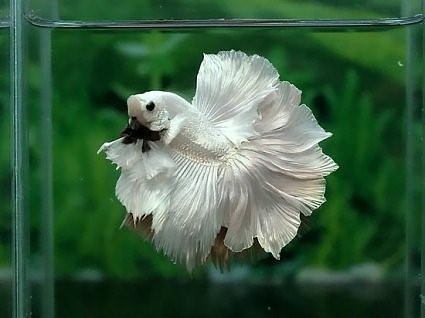
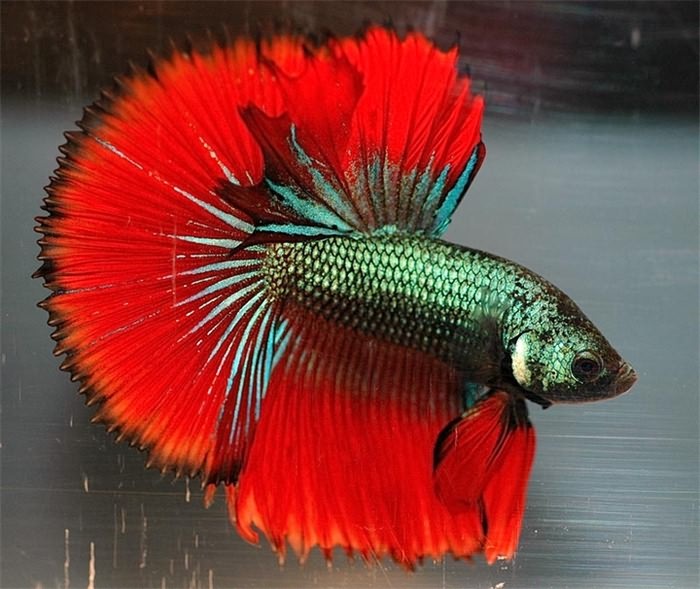
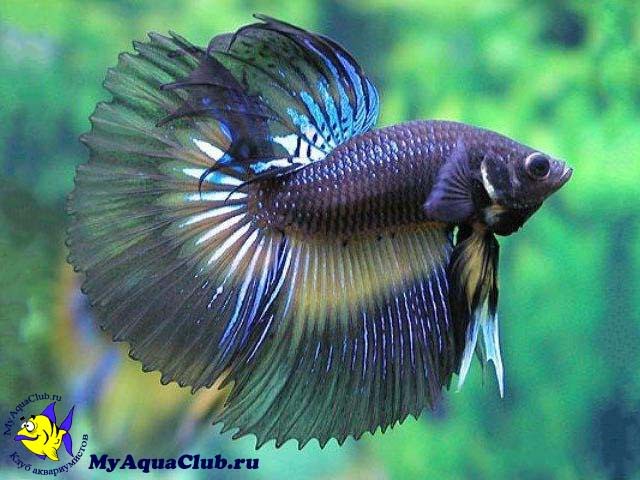
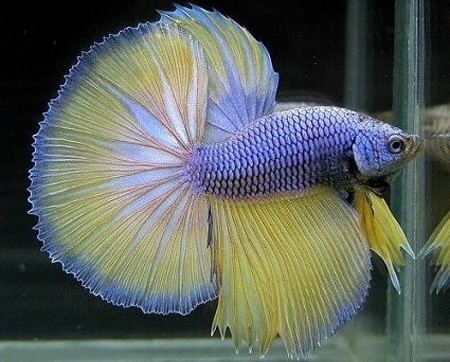
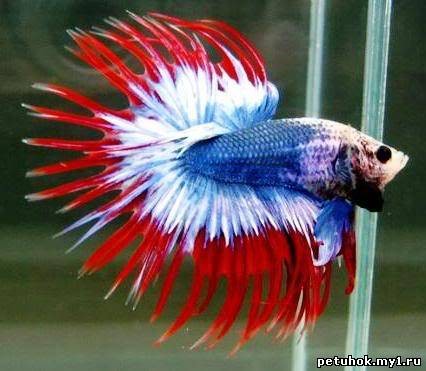
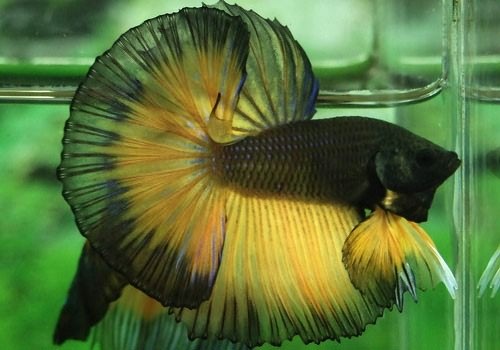
2. Neons
Also a fish known to the Russians. Neons prefer to live in flocks, so it is better to settle them in groups of 5 or more.
The water temperature is 22-25 degrees (ideally); at higher temperatures, the lifespan of these fish is reduced. In principle, neons are unpretentious, they love soft water and an abundance of plants. They are prone to obesity, so they should be fed very moderately.
An adult neon can reach a length of 4 cm.
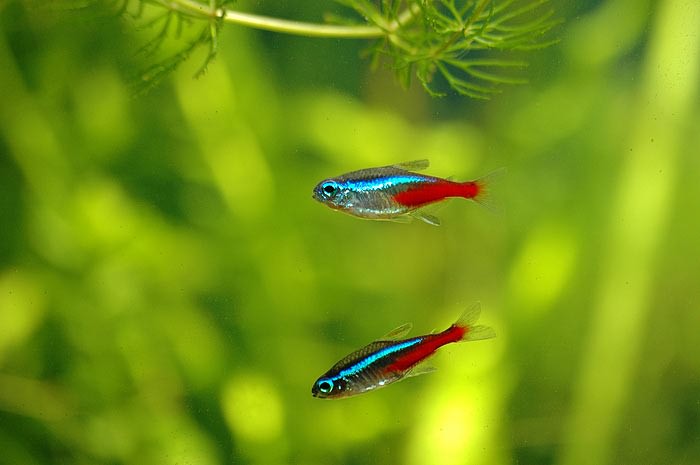
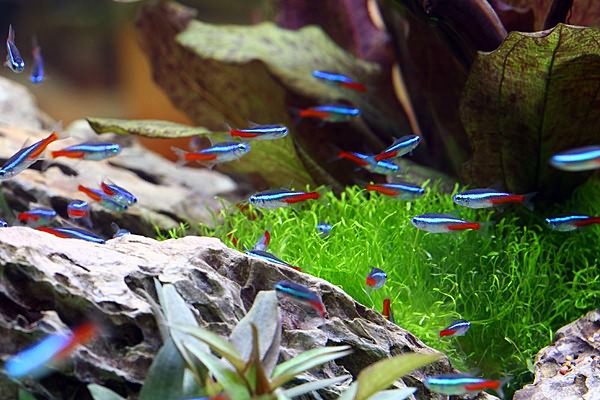
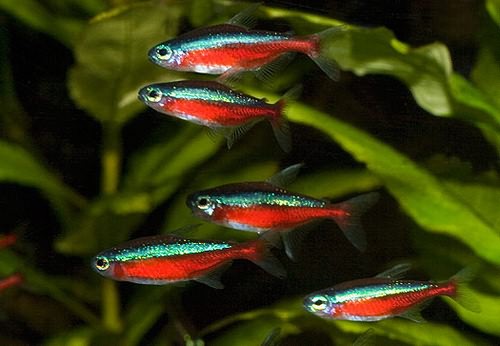
3. Danio rerio:
As a rule, these small fish are always recommended for beginners. Agile, cheerful and unpretentious zebrafish feel best in flocks. They can live in the temperature range of 15-30 degrees and be content with 1 liter of water per 1 fish (that is, even a group of 5 zebrafish can be launched into a five-liter aquarium). Spawns easily in the aquarium.
There are several color forms this fish.
Body length up to 5 cm (but more often 3-4).
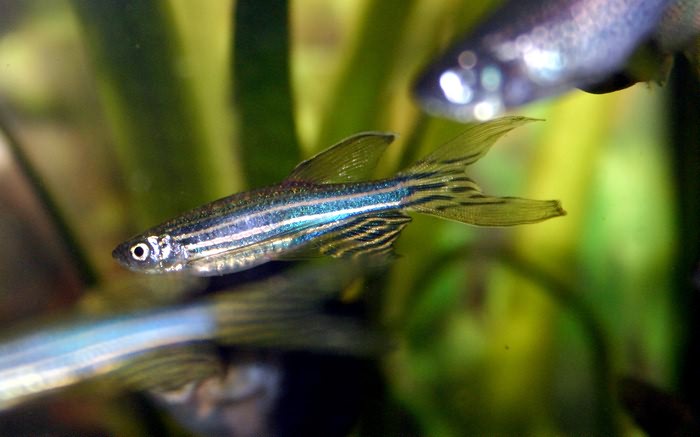
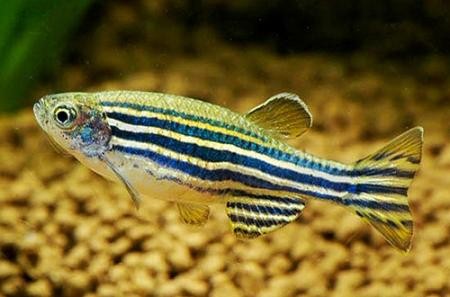
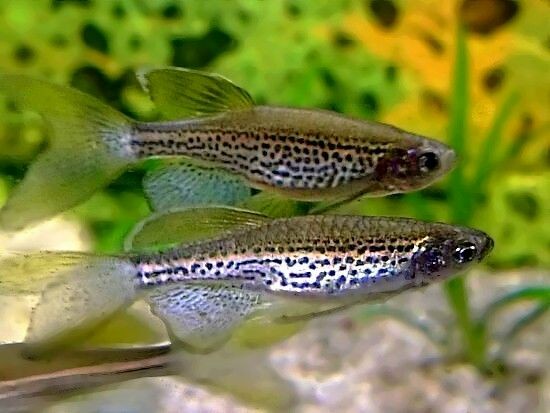
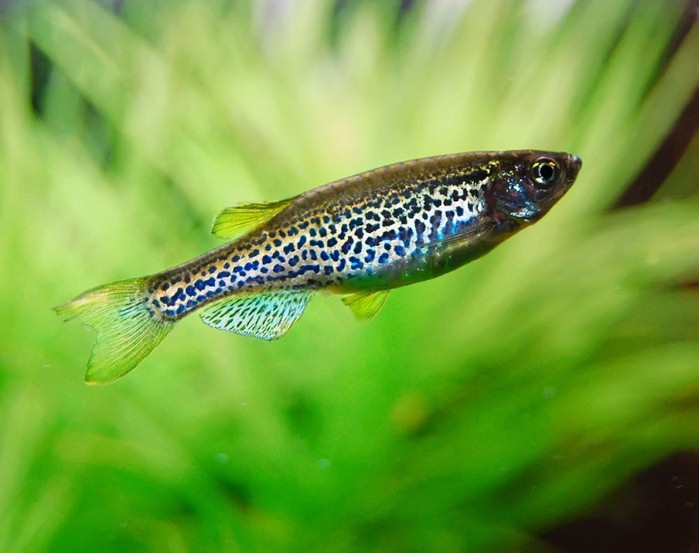
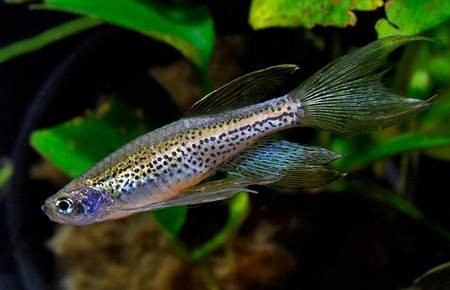
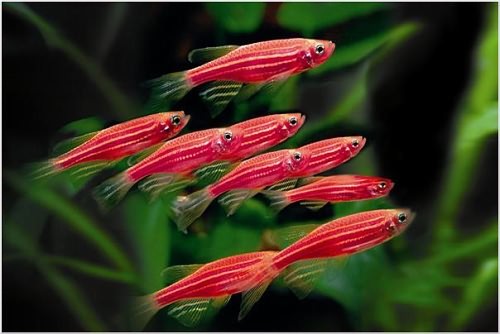
4. Guppy:
Probably, it is with this fish that aquaristics begins for most people. It is the guppies living in three-liter cans, became frequent residents of Soviet (and later Russian) apartments. They are loved by millions for their unpretentiousness (they can live even in the most extreme conditions), beauty (thanks to the many unique colors, everyone can find the "fish of their dreams" =)) and fertility (you can buy only one female, and in a month she will give birth to you 20 fry).
Guppies are viviparous, i.e. they do not lay eggs, but give birth to live fry. Absolutely everyone eats. They are undemanding to water temperatures.
At first I liked them very much, but now they multiplied uncontrollably. It is even annoying that I find at least 20 newborn fry in the aquarium every week.
Male guppies are slender, with a bright body and luxurious tail. Females are larger, thicker, gray and inconspicuous. But there are also quite beautiful purebred females.
Breeders are constantly working on new guppy breeds.
Sizes: male - 3-4 cm, female - up to 6 cm.
(last 2 photos - females)
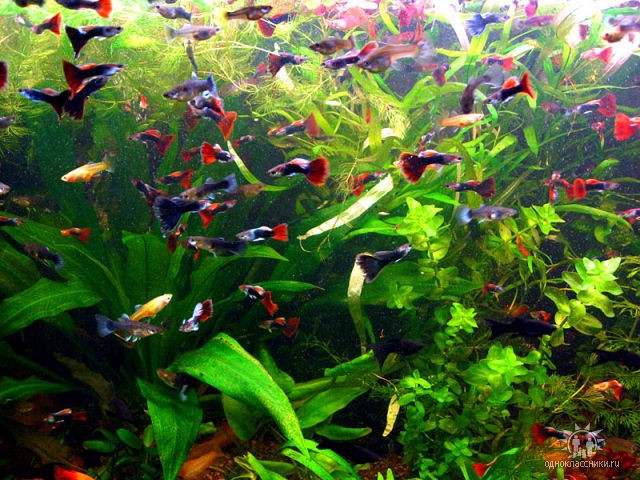
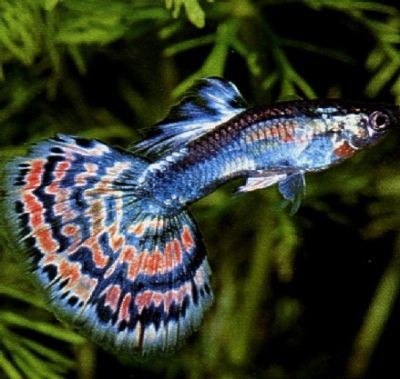
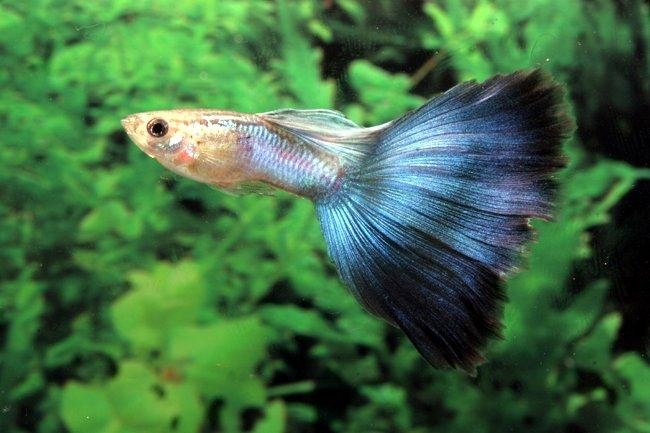
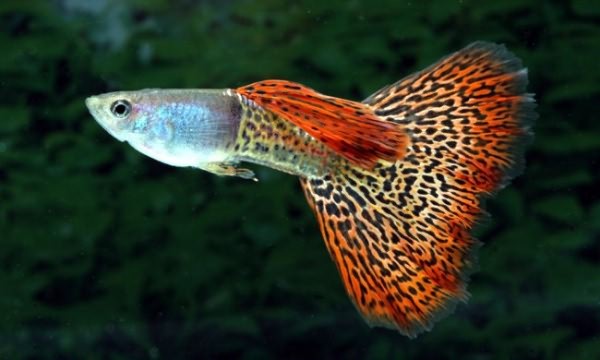
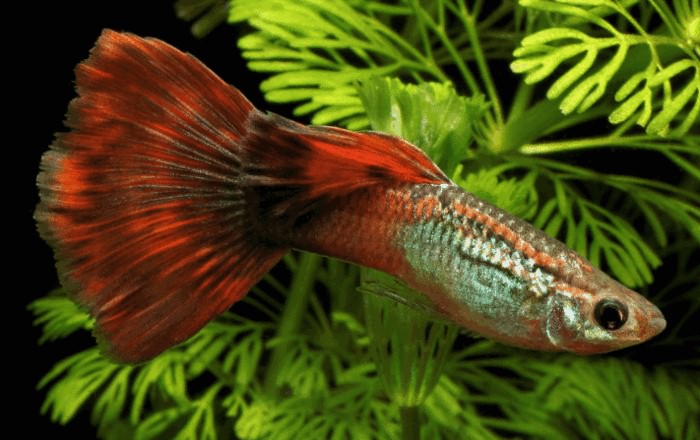
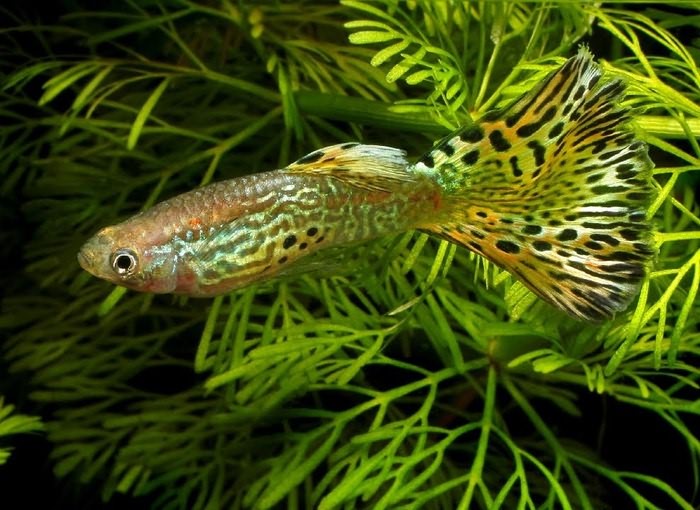
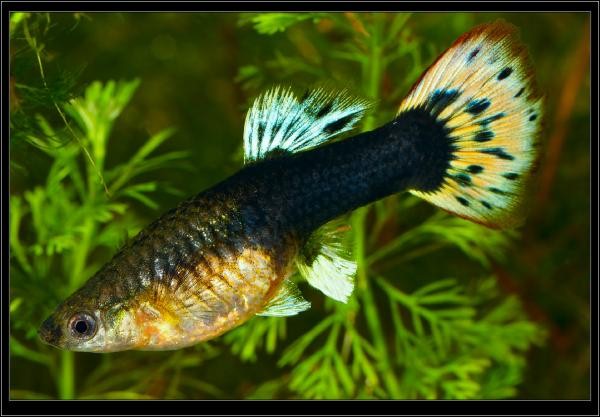
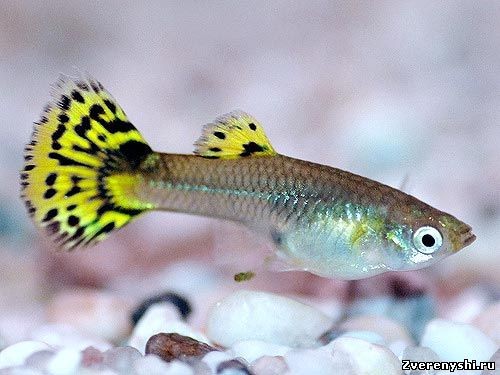
5. Guppy Endler:
Essentially the same guppies. But Endler's guppy is a wild form that breeders did not have time to work on. Such fish are found in Venezuela. easily crossed with simple guppies and produce very cute hybrids)
Endler's guppies are smaller than regular guppies: males reach a length of 2-3 cm. Look great in small aquariums with a dark background!
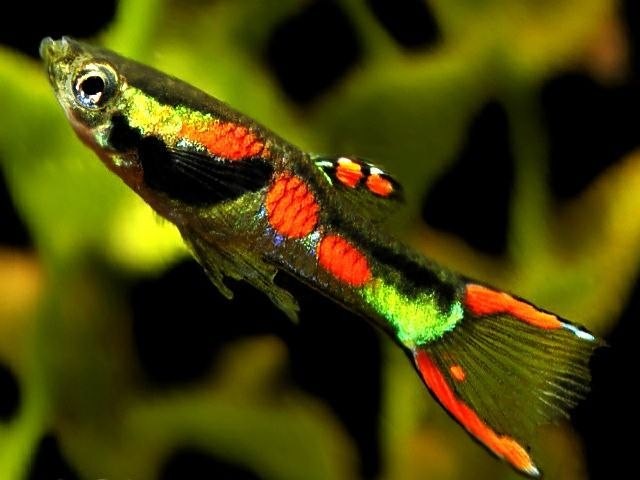
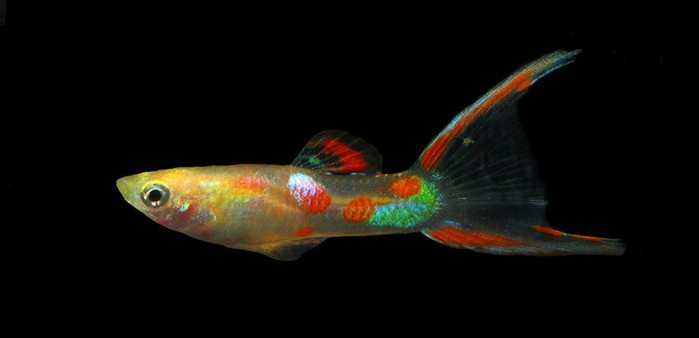
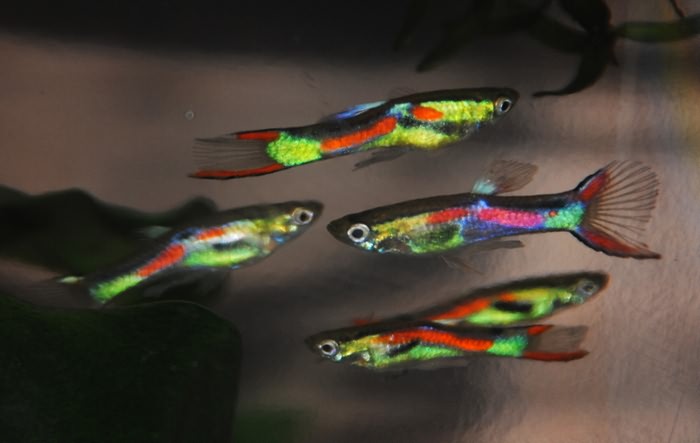
6. Corridor:
The so-called "speckled catfish". In fact, there are many types of corridors, just speckled is the most famous of them.
Corridors love company, buy 3-5 individuals at once. In length, these harmless catfish do not exceed 5 cm, some species (such as the panda corridor) do not grow more than 3 cm at all.
Unpretentious, can live without aeration. The soil should be free of sharp stones so that the fish do not damage their delicate antennae. The optimum temperature for the content is 24-26 degrees.
Water volume: at least 3-5 liters per 1 fish.
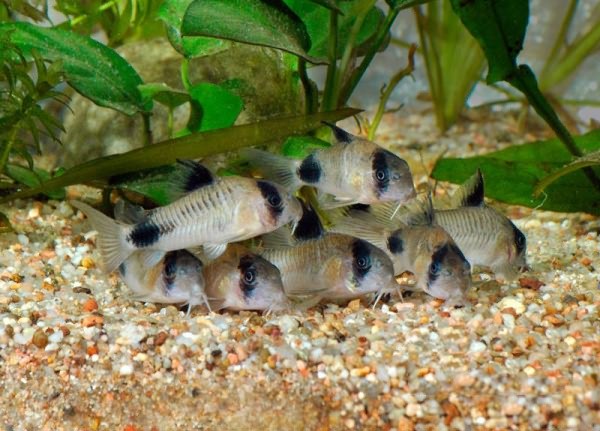
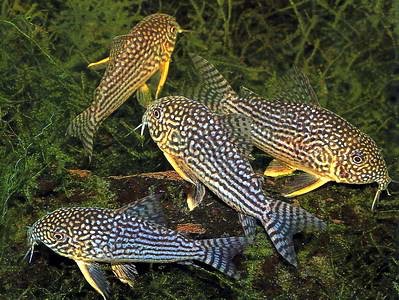
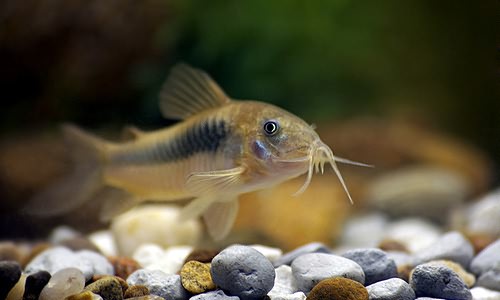
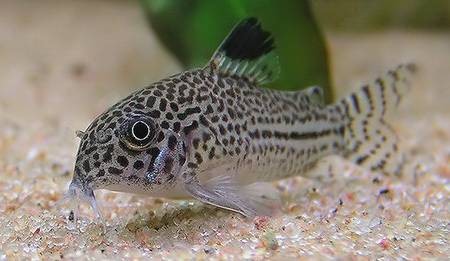
7. Pygmy Corridor:
The type of corridors, which is worth mentioning separately.
Pygmies are small schooling fish, grayish and inconspicuous in appearance, but very cute and interesting in behavior. They feel good only in a flock, they love clean, oxygenated water.
Unlike other corridors, they do not sit only in the bottom layer of water, but prefer to "flutter" around the entire aquarium, like a flock of birds.
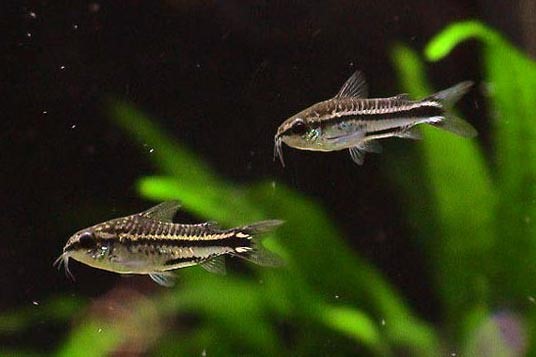
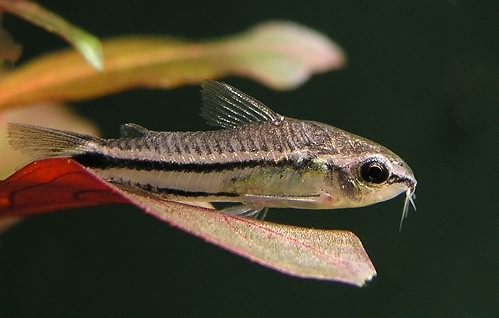
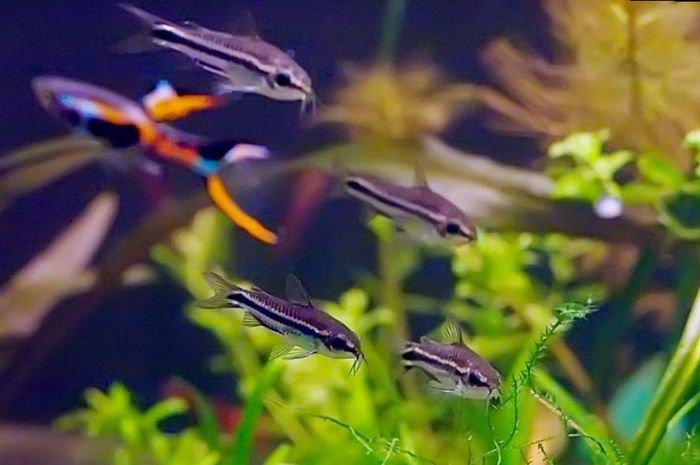
8. Cardinal:
Prefers neutral water, rather cool (18-21 °). 1 fish requires 3 liters of water. The fish are small, 3-4 cm, rather mobile. They love the abundance of plants, they are omnivorous.

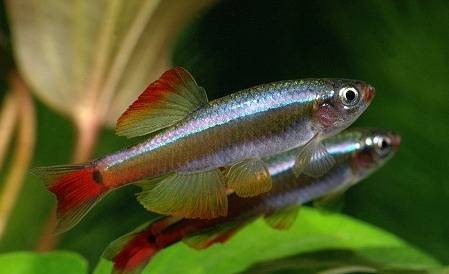
9. Micro-collection:
Ideal fish for a nano aquarium. The body length rarely exceeds 2 cm. The water temperature is 22-28 degrees, they are unpretentious to the composition of the water, less than 1 liter of water is required for 1 fish. Unfortunately, micro-harvests are now rarely found on sale; aquarists wait months for these fish to be delivered to stores.
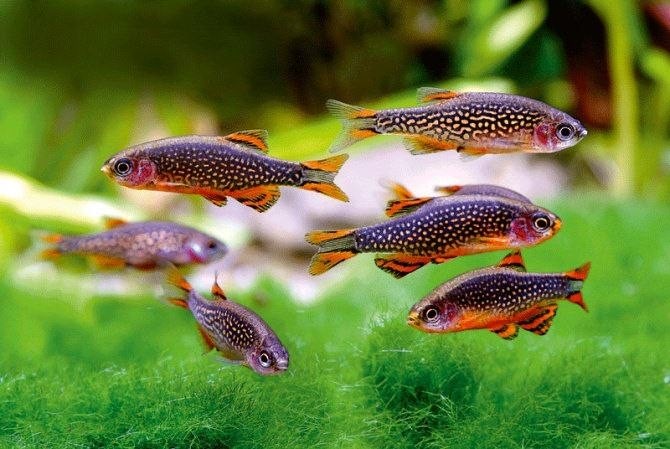
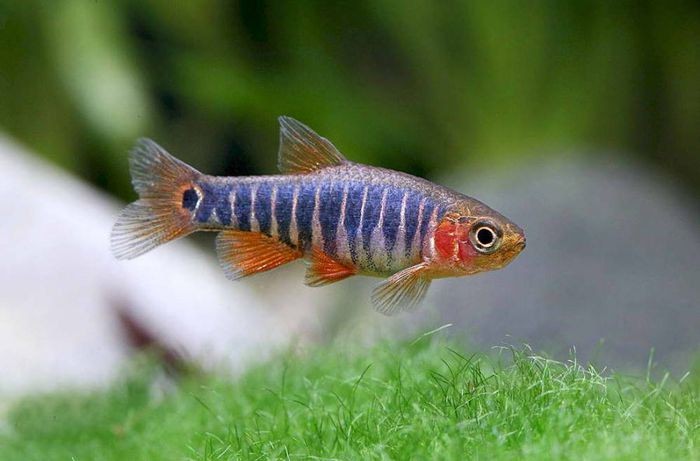
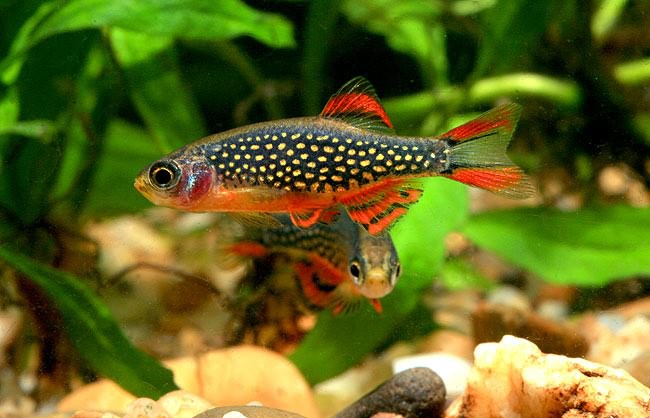
10. Norman's Blue Eyes:
Cute schooling fish, growing up to 3-4 cm. Their eyes glow brightly with neon light, which gives the aquarium a peculiar dynamics and charm.
Peaceful schooling fish, water temperature 20-25 degrees. I live at a higher temperature, very active and playful.
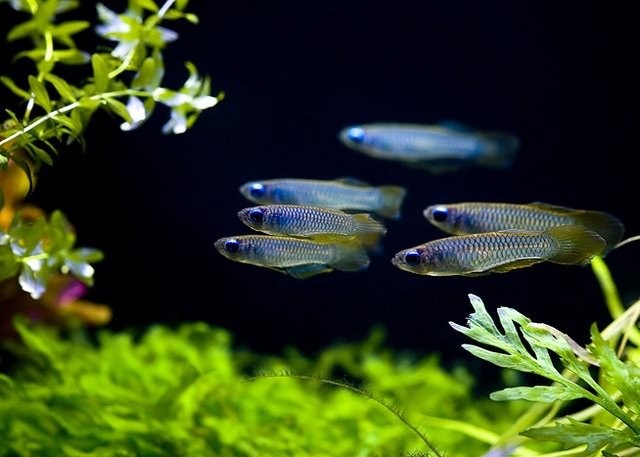
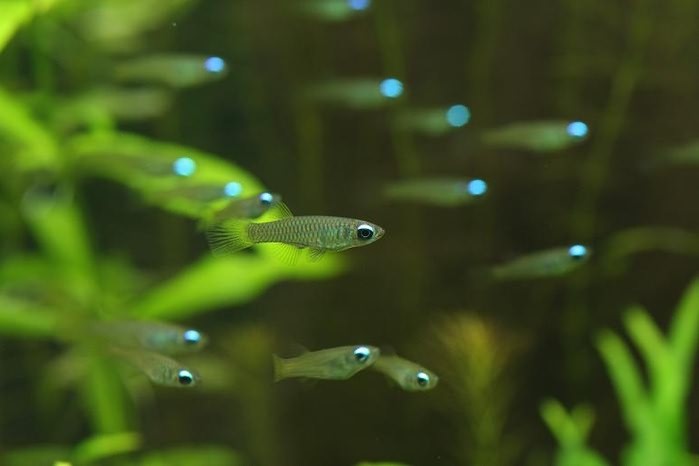
And so, we looked at fish that will be happy even in a small aquarium of 10-30 liters.
Approximate options for settling:
10 liter aquarium:
ONLY ONE OF THE OFFERED OPTIONS!
1 cockerel;
5-7 guppies;
5 neons;
5-7 Endler guppies;
10-13 micro-collection;
5 Norman Blue Eyes;
3-4 cardinals;
5-10 zebrafish;
7 micro-collection + 5 zebrafish;
3 Endler guppies + 5 zebrafish;
3 neons + 3 guppies.
20 liter aquarium:
Family of cockerels (1 male and 3 females);
1 cockerel + 3 corridors;
10-15 guppies or Endler's guppies;
15-20 zebrafish;
10-13 neons;
10-15 blue eyes Norman;
7 cardinals;
20-30 micro-collection;
7 corridors of pygmies;
5 guppies + 5 neons;
15 zebrafish + 15 micro-collection;
10 guppies + 3 corridors;
7 neons + 3 corridors.
30 liter aquarium:
There are even more opportunities here) For example, such fish can be settled, which I did not talk about here. A couple of macropods, a couple of honey gouramis, a couple of pelvicachromis or apistograms.
The rest of the combinations - we look at the 10-liter one and multiply the number of fish by 3.
Naturally, it is better to launch fewer fish for now than planned. Overpopulation is very dangerous for such small volumes. In any case, filtration, aeration and weekly water changes of 20-30% must be provided.
Nowadays, shrimp is in vogue - aquariums inhabited by freshwater shrimp.
Shrimps are unpretentious, cute and very interesting.
Aquarium PRAWNS:
1. Cherry shrimp (cherry):
Small (up to 3 cm) red shrimp. Extremely unpretentious. Reproduces well in the aquarium.
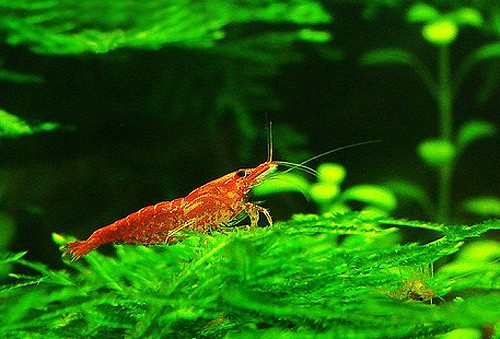
2. Amano shrimp (Japanese pond):
Larger than a cherry (up to 6 cm). Gray in color, it fights well against algal fouling. In an aquarium where shrimps live, the plants are always clean and well-groomed.
They do not breed in captivity.

3. Shrimp crystal:
Small (2 cm), expensive, quite demanding on water, but very beautiful shrimp.
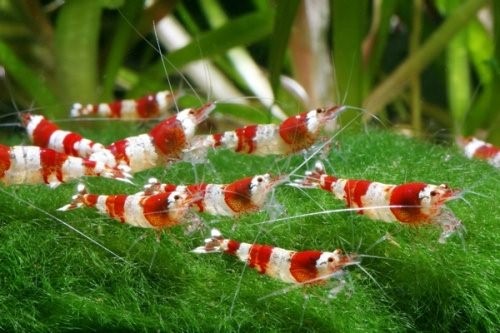
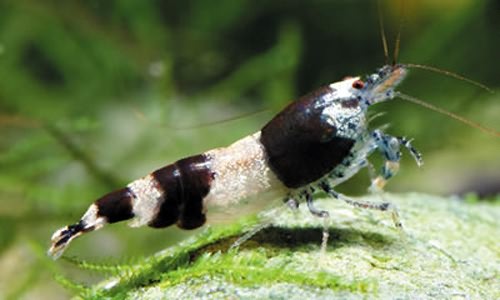
4. Cardinal shrimp:
Very beautiful and very rare shrimp. It is considered difficult to care for.
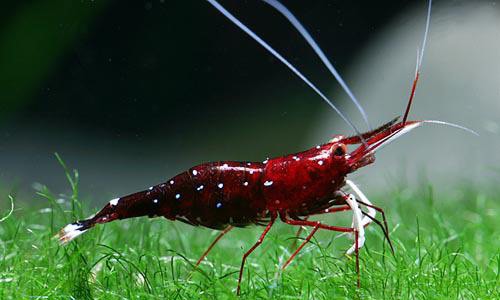
5. Yellow shrimp:
An unpretentious little shrimp of bright yellow color. If it is undernourished, it can start to spoil the plants.
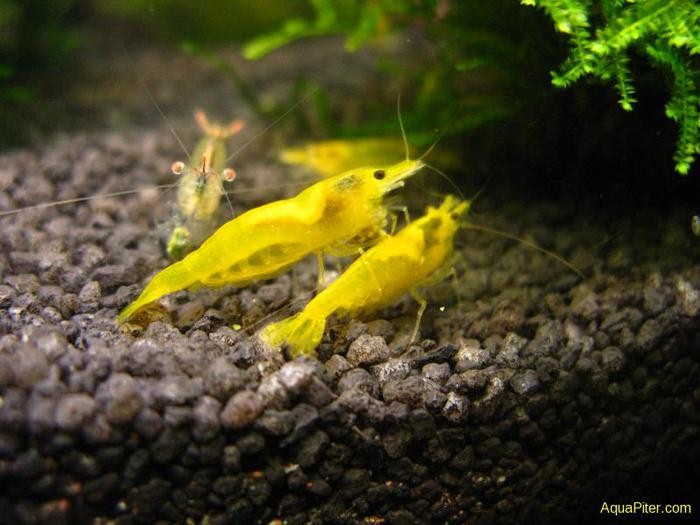
If you want to keep only shrimp (no fish), then you can plant a rather large flock in a small volume. For example, in 10 liters, 20-25 shrimp-cherries will feel great.
Shrimps do not touch the fish, but some fish do not mind eating shrimp. Therefore, small fish such as Endler's guppies, micro-gatherings, neons, corridors and Norman's blue eyes will become ideal neighbors for shrimp.
The calculation is something like this:
For 20 liters: 10 cherry shrimps + 5-7 Endler guppies (or other small fish).
MOLLUSCS in the aquarium:
Some snails are also quite cute and even useful. They will be great neighbors for your fish or shrimp.
1. Helena:
A cute striped snail that feeds on ... other snails. It helps a lot to get rid of the invasion of pond snails and coils that spoil the plants. In the absence of "live food" it feeds on the remains of fish food. It reproduces well in the aquarium.
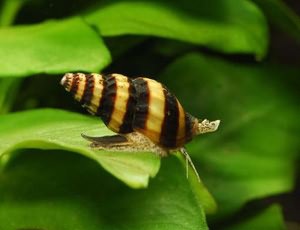
2. Neretina:
A beautiful and useful snail. Helps to remove plaque from walls and plants. It lays eggs, but snails do not appear in fresh water.
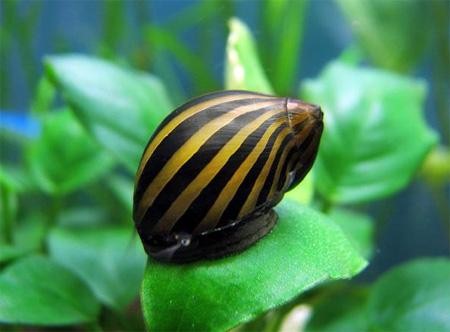
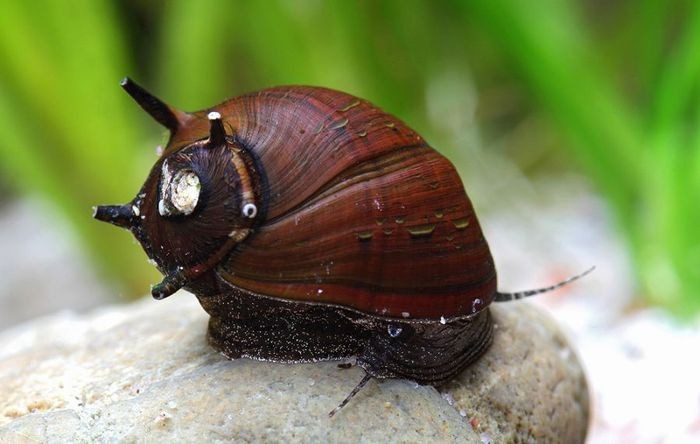
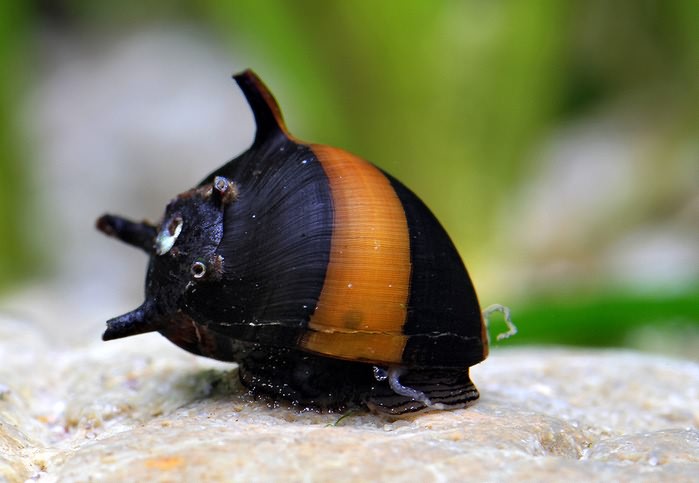
3. Ampularia:
The most beloved snail, very often found in aquariums.
Unfortunately, some types of ampularia damage plants. And there is a lot of dirt from them.
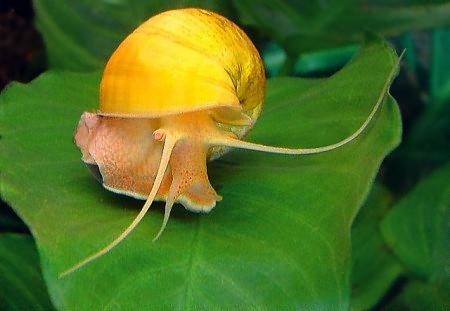
RESULTS:
I tried to introduce you to creatures that will feel great in a small (10-30 L) aquarium. An aquarium with small nimble fish or businesslike shrimps will greatly decorate your apartment or office. With proper and timely care, it will delight you for a long time.
I wrote about how to start an aquarium in the article " Underwater world on your table. "
I will repeat again simple rules to help you keep your aquarium in good condition at all times:
1. DO NOT HURRY! The start-up of the aquarium should last at least 2 weeks (from the filling of water to the start of the fish).
2. Down with artificiality! Plants, substrate and decorations in the aquarium must be NATURAL. No plastic!
3. The filter must work 24/7 !.
4. Water changes should be done once a week, at 20-30%. Never change all the water at once! Never wash your decorations with chemicals!
5. Feed the fish little by little! One day a week is a fasting day.
6. If after you have installed the filter, turbidity appears - do not rush to change the water! All is well, the appearance of turbidity indicates that a balance has begun to be established. After a couple of days, the water will be clear.
7. Don't overdo it with fish! Less is better.
8. Remember: an aquarium is a complex biological system. Do not climb there once again by hand, do not use chemistry or other drugs.
9. The fish is also alive. And you are responsible for her life.
________________
There is nothing complicated in the aquarium hobby. Learn to be more patient, do not neglect advice, do not forget to devote half an hour a week to your underwater world - and he will thank you. Coming home, you will enjoy lush green plants and frolicking fish.
Good luck to everyone who decided to start an aquarium!
Next time I will try to tell you something more interesting from the world of aquarium hobby)
Many fish intended for keeping and breeding in captivity cannot do without oxygen and a filter. But not all! There are wonderful aquarium fish that do without an aerator. Their name is betta, or cockerels.
The question “opened a pet store. Business is not going. What to do? "- 2 answers
1. The main advantage of these fighting fish is that they can live without oxygen and filter. The fact is that cockerels breathe atmospheric air. Moreover, they do not even like to live in an aquarium equipped with a filter, since such a "dwelling" is oversaturated with oxygen, and the current created by the compressor only scares them. Of course, one should not argue that males can live well in three-liter jars, but the fact that they feel great in a small aquarium without any filtration and aeration is an indisputable fact!
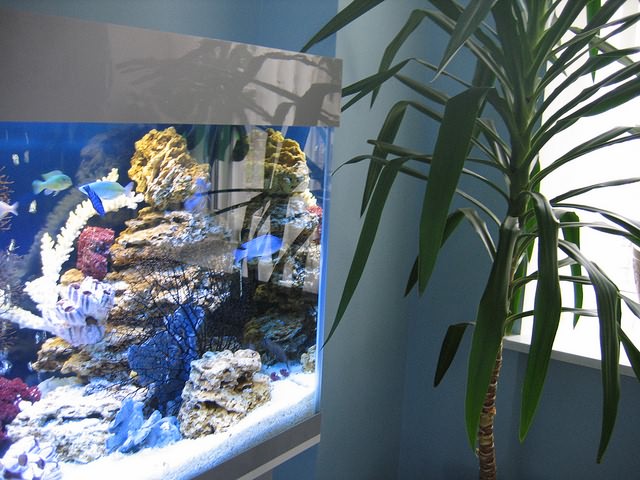
2. But the breeding of these fish can cause some difficulties, and not every person wants to become a professional breeder. Many people generally keep cockerels to enjoy their beauty. The cockerels are not whimsical in the rest of the service: they feel great in stale water, and also do not have an increased appetite. However, this does not mean that the males need to change the water every six months and feed them once a week. No!
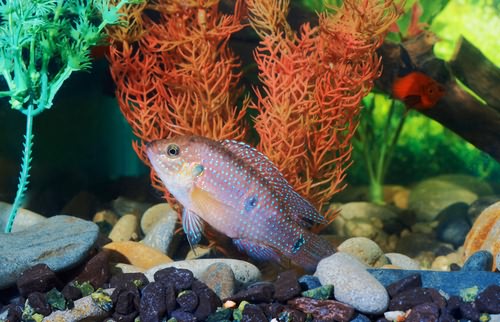
3. Aquarium fish betta (or cockerels) are members of the labyrinth family. It is no coincidence that these fish were dubbed "cockerels". The fact is that their color and warlike fighting character resembles beautiful and cocky roosters. For example, if you put two male betta in one aquarium, then a real cockfight can begin with loose fins and tails. If the "fighters" are not separated in time, one of them will die.
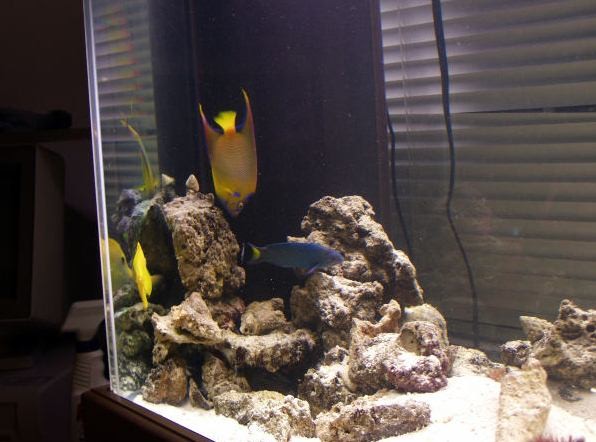
4. In general, cockerels trace their ancestry from Vietnam, Indonesia and Thailand. There they live in warm and small reservoirs with stagnant and silted water. This is why an aerator is not needed to oxygenate a cockerel tank. Males have an oval body, elongated and slightly compressed at the sides. The body length of males reaches 5 cm, and in females - 4 cm. Dark stripes are located along or across the body of the males. The upper fin is rounded. The lower one starts from the head and reaches the very tail. The pectoral fins of the cockerels have a regular pointed shape.
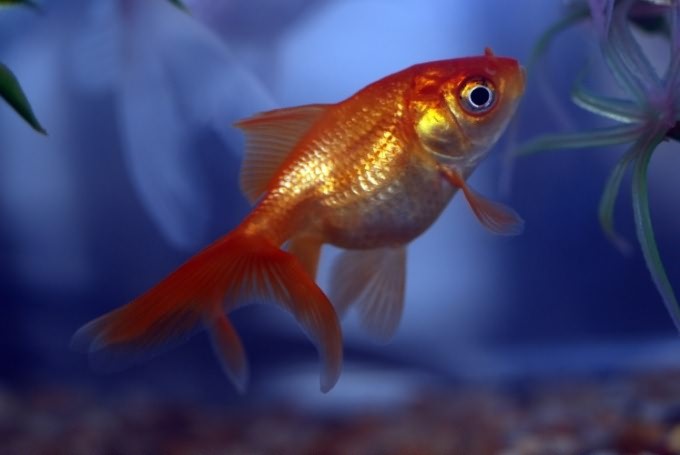
5. It is believed that these fish have no equal in beauty and uniqueness of color. Cockerels dazzle, and their colors shimmer from red to pink, from pink to yellow, from yellow to orange, from orange to green, taking on all sorts of shades. A particularly bright color can be observed in males arranging a "cockfight". It is interesting to observe the fish even when they inflate their gills in an excited state, forming a kind of bulging "collar" around their head.
![]()
What unpretentious aquarium fish are good for a beginner who does not have much experience in maintaining an aquarium? When there is a desire to create good living conditions for your pets, you can choose small and beautiful fish with a peaceful disposition that can live in not very capacious tanks.
Guppies are one of the most popular decorative pets in the aquarium. Outwardly, they are very bright, cute, have a beautiful ponytail. Can be kept in small tanks from 40 liters, they are able to tolerate changes in water parameters. Some guppies can withstand the lack of filtration, aeration, plants, although such a settlement is strongly discouraged. Guppy fish are fertile, viviparous. They get along well with small and peaceful fish. For this reason, they have been popular in our country for many years. In addition, the variety of colors is amazing - you can choose a flock of fish of different colors, whose offspring will be even more colorful.
Watch a video describing the maintenance, care and reproduction of guppies.
Swordsmen - they are easily recognizable by their caudal fin, which in males ends with a "sword" at the lower base of the tail. There are also many varieties of swordsmen: color variations, sizes, demeanors prove that these are very interesting pets. The main advantage is that they are hardy, livable with many ornamental fish, and do not spoil the aquarium decorations. It is advisable to settle in a 20-50 liter tank, where there are many shelters and dense vegetation. Swordsmen can stand up for themselves - they can be settled with active fish that like to bother their neighbors. Swordsmen are tenacious also because the female of this species suddenly becomes a male, which saves her in a critical situation.

Mollies are viviparous fish of the Pecilia family. Relatively hardy, withstand small changes in water parameters. However, their body does not withstand bad biological stress - dirty water, low water temperature, fresh water. They prefer salted ponds and bright lighting. Some mollies can come into conflict with swordsmen, barbs. The character is peaceful, but unpredictable.

Tetras are another popular fish of the Kharacin family. Unlike corridors and guppies, they will not be able to survive in strict conditions of detention - they require a lot of dissolved oxygen in clean water. Schooling fish can be settled in a common tank with a volume of 35 liters or more, in a flock of 5-6 individuals.

Gourami are easy-to-keep fish, suitable for beginners. They need portions of atmospheric oxygen, so aeration will have to be monitored. Gourami know how to stand up for themselves, eat live, frozen and plant food. Sometimes gourami can show aggression towards fish of their own species.
See how to keep pearl gourami.
Barbs are pets that are easy to care for and maintain, but with what character! Considering that they are schooling fish, they can get other neighbors, especially bright ones and with lush fins. These are the pirates of home aquariums, they can disturb even large cichlids, they are not suitable for a small general aquarium. The advantages of barbs are endurance, livability, beautiful appearance.

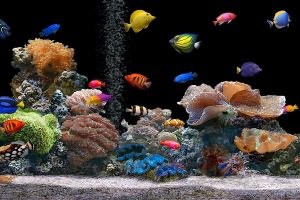
Caring for aquarium fish is a whole science. At first glance, it is impossible to remember all the conditions and requirements for the maintenance, it is difficult to find funds to purchase a huge aquarium and expensive equipment for it and the time to prepare special feed and regularly test the water. But there are fish that will forgive the beginner for his inexperience and possible mistakes, and the care of which will not require huge material and time resources from him. These easy-to-care, tenacious and unpretentious inhabitants of the aquarium will be discussed.
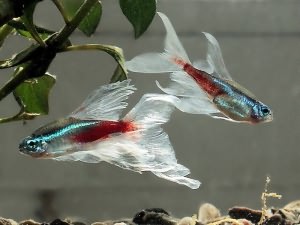 This includes such popular species as thorns, neons, various tetras: copper, firefly, rhodostomus. Small, very charming schooling fish with interesting colors, red and gold spots, glowing neon stripes. The thornsia has a dull color, but they learned to color its albino form artificially, getting multi-colored fish called caramels.
This includes such popular species as thorns, neons, various tetras: copper, firefly, rhodostomus. Small, very charming schooling fish with interesting colors, red and gold spots, glowing neon stripes. The thornsia has a dull color, but they learned to color its albino form artificially, getting multi-colored fish called caramels.
The mentioned representatives of the characinaceae are able to live in small aquariums, but they are more demanding on the conditions of detention. In particular, they prefer soft, acidic water and do not like massive changes, so it is better to peat the water for the aquarium and change it regularly, but little by little. In addition, it is highly desirable to have live plants in an aquarium with these fish.
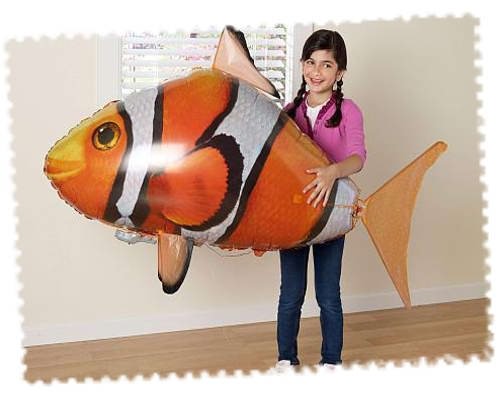 What kind of fish live in the aquarium. What kind of fish to get? The variety of the aquarium world, the countless number of its inhabitants plunges the novice aquarist into confusion. I suggest you approach this issue from the other side, namely, not to study the types of fish and the demand for them, but to proceed from your capabilities.
What kind of fish live in the aquarium. What kind of fish to get? The variety of the aquarium world, the countless number of its inhabitants plunges the novice aquarist into confusion. I suggest you approach this issue from the other side, namely, not to study the types of fish and the demand for them, but to proceed from your capabilities. So, a little about the financial component. The more fish, the larger their home should be - the aquarium. The larger the aquarium, the more expensive the equipment for it is. Thus, the more fish and aquarium, the more your expenses will be.
Now let's conditionally divide all aquariums into three groups:1st group: aquarium up to 50 liters. Only small and peaceful fish can live in such an aquarium. These include:
Guppy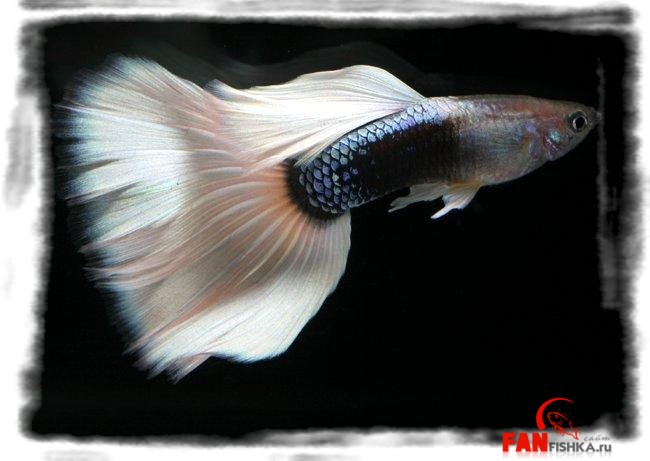 Swordsmen
Swordsmen 
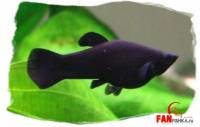

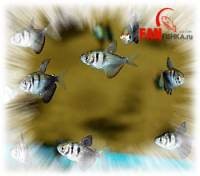
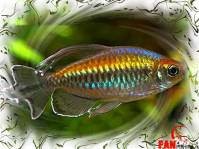 Danio
Danio 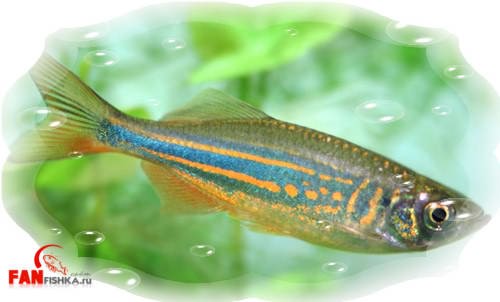
given the desire of many beginners to tackle larger fish, you can try to get:
Gourami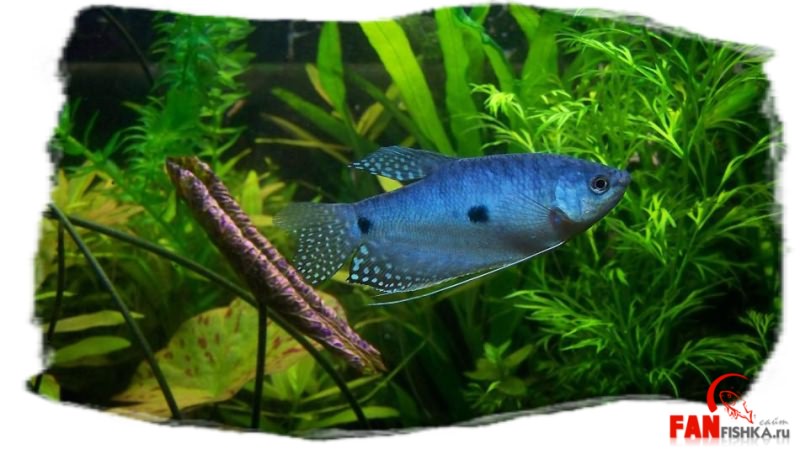
 gold fish(1 PC.)
gold fish(1 PC.) 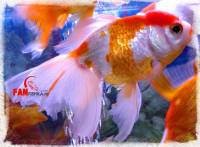
2nd group: aquarium from 50 to 100 liters. In such an aquarium, small cichlids and fish with medium aggression can already live. These include:
Cichlazoma black-striped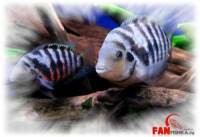
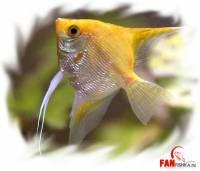 Barbs
Barbs 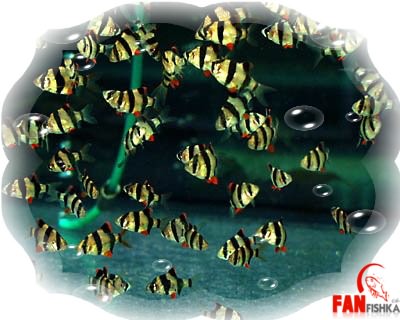
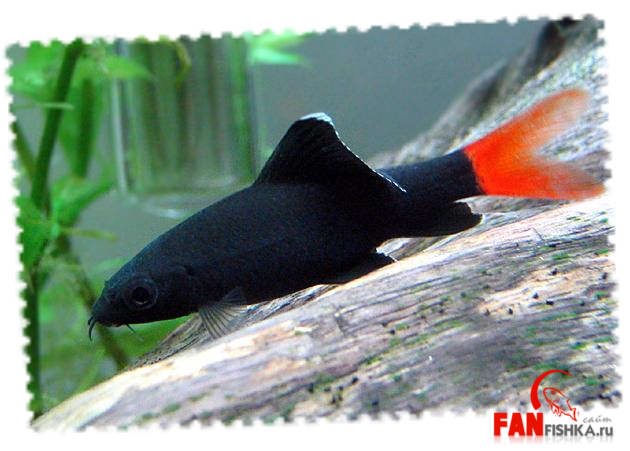
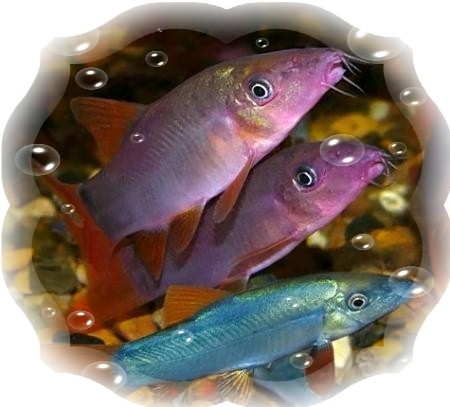
3rd group: aquarium from 100-200 liters. Here the flight of your imagination already begins - you can start any fish, with the exception of especially large and capricious fish. 4th group: aquarium from 200 and above. Suitable for all fish, even those like Astronotus(preferably from 500 liters.) and Discus!
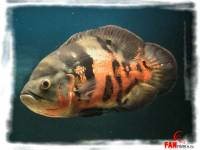
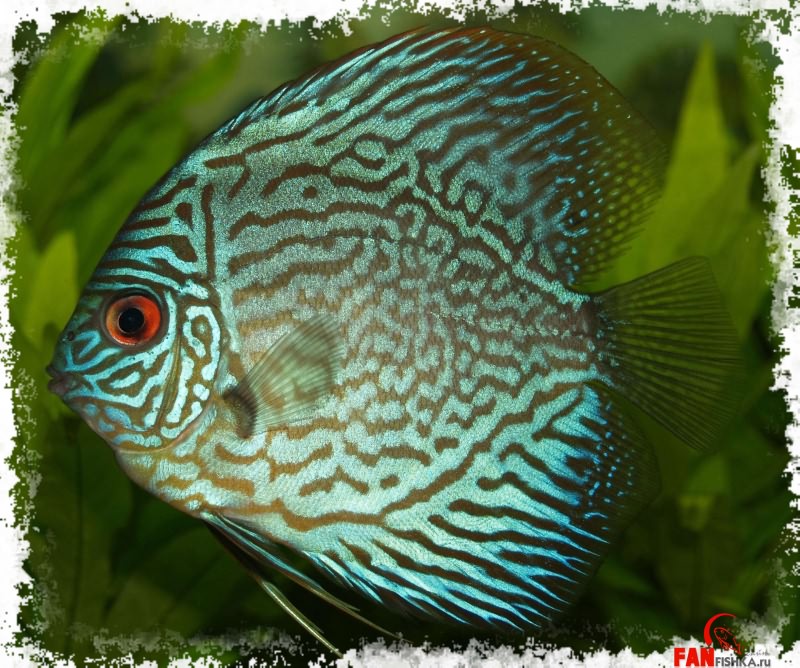
Fish are cold-blooded animals, the full-fledged life of which is ensured due to the constancy of the water temperature in the habitat. The body temperature of the fish is about 1o higher than the water temperature. Changes in the temperature of the environment directly affect the health of cold-blooded organisms.
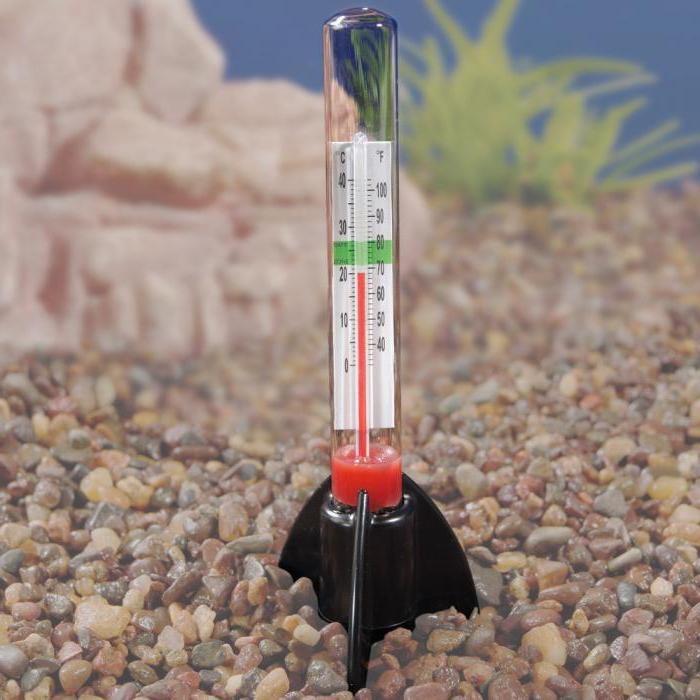
All holders of aquarium fish should understand that the life of their pets directly depends on the temperature in the aquarium. What should be optimum temperature water for different ornamental fish, and how many degrees should be reflected on the thermometer scale for each fish to feel healthy?
Wobble aquarium temperatures perhaps it is even permissible within certain limits. A slow change of 2-4 degrees will not lead to tragic consequences. If the aquarium is placed on a windowsill or near a window, then depending on the season it will change temperature regime... You cannot install aquariums near batteries and other heating systems, even heat-loving fish will not survive strong heating.
What can be the water temperature for different fish? You can set the average oscillation range for cold and warm water fish, but these are not settled in the same aquarium - this is prohibited. How many degrees should there be an acceptable temperature rate that would be acceptable for everyone:
See how to lower the temperature in the aquarium in hot weather.
Temperature fluctuations should not exceed three degrees! Before placing fish in the aquarium, find out what is the average temperature range of their content.
It is also worth controlling to above the water - this is important for labyrinth fish that inhale portions of air from the surface. As an example, we can investigate the content of the labyrinth fish gourami, which, inhaling air 5o lower than water, can suffocate and die. It is for them that cold atmospheric air is critical.
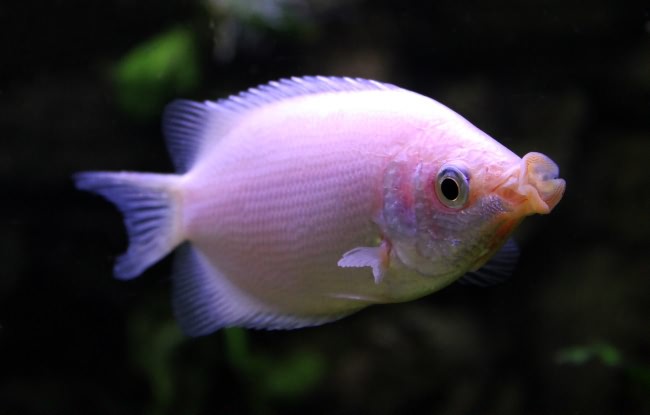
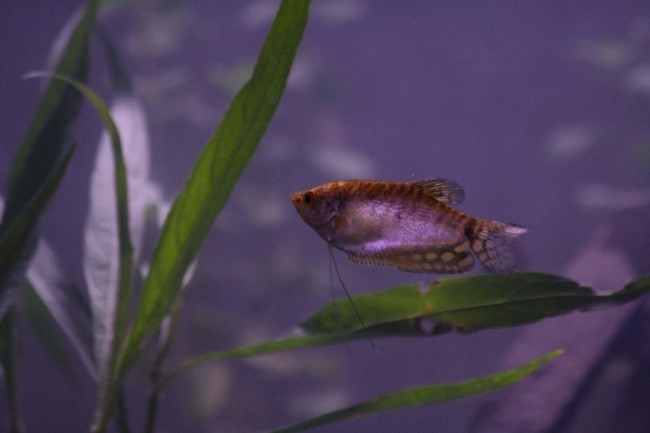
Gourami are sensitive to temperature as it affects the breeding cycle. Warm water is an incentive for spawning, during this period it is appropriate. If it is constantly warm, vital processes slow down in the body of gourami, and the protective functions of the body decrease. At an incorrect temperature, sex cells are not produced, and gourami will not give offspring. Surviving fry die in the wrong aquarium water conditions.
Permissible temperature of gourami content in water: 23-26 °, to air on the surface - 26-28 °.
Many beginners prefer small aquariums as their first aquarium. A small aquarium is convenient because it does not take up much space and is relatively inexpensive.
The main problems with maintaining the right aquarium begin with the selection of fish for it. And now I will tell you what kind of fish you can keep in a small aquarium and how to pick them up.
Small aquariums are considered aquariums with a volume of 20-30 liters. Such a small volume imposes strict requirements on the quality of the aquarium filter, constant air supply and regular maintenance.
What happens if the air supply suddenly stops working in a small aquarium? Due to the small volume and small area the surface of the water through which gas exchange with air takes place, the oxygen content in the water drops rapidly, and the fish begin to suffocate. And a few bushes of aquarium plants that you plant will not help in the absence of forced aeration.
What happens if the aquarium filter suddenly stops working in a small aquarium? There is an accumulation of organic waste, which cannot be recycled by the nitrogen cycle due to the small amount of soil. The quality of the aquarium water will deteriorate rapidly and negatively affect the fish. Further, the concentration of nitrites and ammonia will increase, which can lead to severe poisoning of fish. If the maximum permissible concentration of nitrite or ammonia is exceeded, the fish die.
Lack of regular maintenance results in the effect of a broken or missing aquarium filter. There is an accumulation of organic waste, an increase in the concentration of nitrites and ammonia, followed by the death of fish.
Based on the above, we will select fish according to the following conditions:
Knowing the input conditions, it remains only to choose the most suitable and most unpretentious fish.
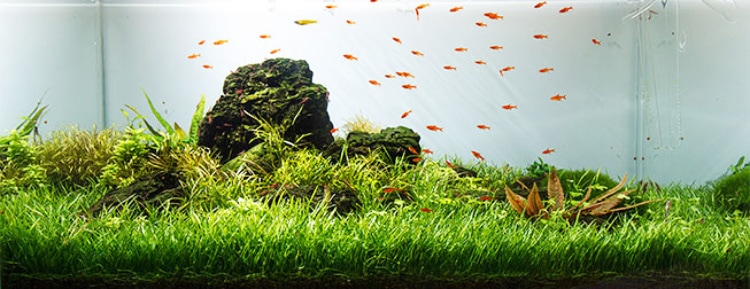
Best of all, the first condition is satisfied by labyrinth fish and fish that can breathe atmospheric air. The most common and well-known are:
Macropods are very pugnacious, so I exclude them from the list. Male cockerels do not get along with each other and many other fish, and gourami can reach large sizes, with the exception of pearl, marble, honey and golden gourami.
Now let's try to determine a list of the most unpretentious fish that will feel great in a small aquarium:
As you can see, this list is somewhat similar to the first one. Therefore, there are already major contenders in the form of cockerels, gourami and catfish.
For the final solution to the issue of settling a small aquarium, it remains to calculate how many and what kind of fish we can launch into it. There is a popular rule of thumb that says: A fish up to 6 cm long requires 5 liters of water. Based on the volume of the aquarium of 20-30 liters, I will assume the following selection of fish for settlement:
Catfish of the corridors are attached to the rest of the fish, since the fish is exclusively bottom-dwelling and peaceful.
The final decision in the choice of fish for a small aquarium, I leave to you, since I do not know your taste preferences. I would opt for:
Concluding the article, I want to remind you that a small aquarium does not forgive mistakes in its content. Do not be lazy to take care of your aquarium and fish on time.
Watch a video of the design of a small aquarium that suits the indicated fish.
Beginners it is better for aquarists to take for a start unpretentious in the maintenance of fish. Over time, if the desire arises, move on to more demanding ones. This way you can avoid big disappointments in a pleasant hobby. Even species of fish that are not difficult to maintain need competent care, only you with them will be simpler and easier.
Always buy or take only those aquarium fish that you like, which pleasant to you personally. This applies to both species of fish and to specific individuals. Among the unpretentious and difficult to keep, there are many delicious, interesting and beautiful fish. The choice is large, you can always find it to your liking.
Better in the beginning familiarize with classification fish, read their characteristics. Understand habits, requirements and conditions content liked species. Do their lifestyle, breeding frequency, maintenance requirements, etc. suit you? This is not only pleasure and admiration. Aquarium fish need to be taken care of. Then you need to pick up compatible for keeping in one aquarium.
Having decided on the types of fish and the number of individuals for your aquarium, you can go buy. You need to buy healthy... Do not be too lazy to travel around several stores, bypass different sellers. And then go back for a purchase in a more trustworthy place, where the right fish are better. It's good to hold new fish in quarantine even if they look healthy on the outside.
If the aquarium is new, then at first you need to start the aquarium correctly and only in a few days you can buy and run first fish.
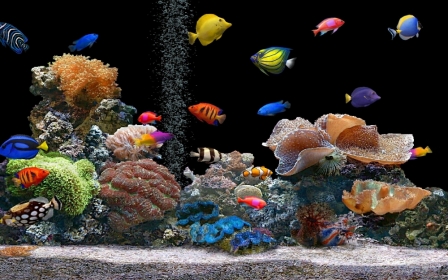
1. Freshwater, marine and fish that can live in brackish water.
Marine suitable for keeping in salted aquariums, sea water. Freshwater- in fresh water, it is about them that will mainly be discussed below.
2. Preferring messages gregarious, single, paired or harem Lifestyle.
Depending on these preferences, you need to buy the necessary minimum quantity fish of this species in your aquarium.
3. Viviparous(the females do not spawn, but the fry that are already formed, ready for independent life) and spawning.
4. Tropical(minimum 18-20 ° C) and living v cold water
(14-25 ° C).
5. Those who live mainly in upper layers of water, v middle layers of aquarium water and leading bottom Lifestyle.
6. Predators, varied eating, herbivorous.
Fry and comparatively more small fish most peaceful and calm fish (not obvious predators) are considered as food.
7. Nimble and movable, calm and slow(by temperament).
Agile can irritate calm and slow people. And large, but sluggish can nimble and aggressive small fins.
8. Very large, large, average, small and very small.
Large ones can exterminate, eat or simply kill clearly smaller ones.
9. Demanding a lot oxygen dissolved in water(must be kept in large aquariums), the average the amount and for which the amount of oxygen in water not very important.
The latter include those living in the bottom layers (catfish). And also labyrinth (cockerels, gourami), which are able to breathe oxygen from the atmosphere.
10. Territorial, aggressive and livable.
Some aggressive ones can only be kept alone or with more large species.
It is good for anyone to have plenty of hiding places in the aquarium made of plants, driftwood, rocks, coconut shells, etc.

About 20 genera and 140 species. The family contains many species of viviparous fishtooths. Unpretentious to feeding and keeping conditions, ease of reproduction.
Most species of Peciliaceae are brightly colored. A large number of new forms have been bred, differing in color, size and shape of the dorsal and caudal fins.
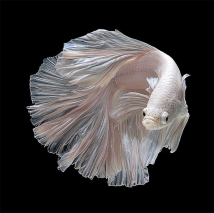 Male Siamese Cockerel
Male Siamese Cockerel Family of the order Perciformes. They are able to breathe atmospheric air through a special organ - a labyrinth.
Labyrinth fish are easy to maintain and care for, small. Males build a nest for eggs from air bubbles on the surface of the water.
There are 275 genera, including more than 1500 species. Easy to maintain. Many species are gregarious. Many small in size. Nimble or calm, many are peaceful.
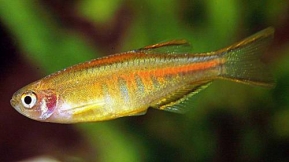 Danio Firefly
Danio Firefly  Blue tetra
Blue tetra American tetras, neons - gregarious, small, peaceful (excl., Piranha), mostly brightly colored. Fish with characteristic dark spots and strokes that glow with reflected light.
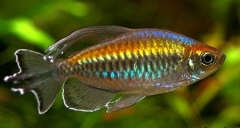 Tetra Congo
Tetra Congo 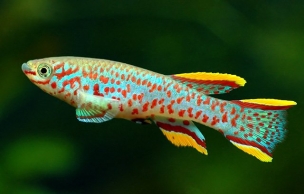 Afiosemion gardner
Afiosemion gardner Brightly colored and unpretentious to the conditions of keeping and breeding, especially to the volume of the aquarium, they are excellent aquarium fish. They live in streams, rivers and lakes, live 2-3 years. Some species exist in drying up reservoirs and puddles and live only one season - 6-9 months.
It is interesting to get divorced. Species inhabiting permanent water bodies lay several eggs per day on benthic or floating plants near the surface. Species inhabiting dry bodies of water lay eggs in a soft substrate (most often peat). After the pond has dried out fish die, and caviar in peat it goes into a state of diapause, which in some species can be up to 18 months. At the onset of the rainy season and filling the reservoir with rainwater come out of caviar fully formed fry that swim and feed immediately. As an adaptation to transience life cycle representatives of these species become sexually mature at the age of 4-6 weeks.
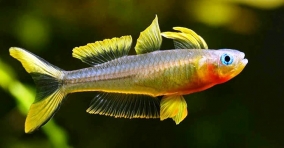 Popondetta blue-eyed
Popondetta blue-eyed The family contains about 10 genera and is limited in distribution fresh waters Australia and New Guinea.
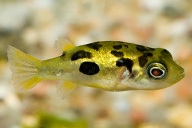 Dwarf tetradon
Dwarf tetradon In a moment of danger, they can swell like a ball to appear to the enemy “too big to devour”.
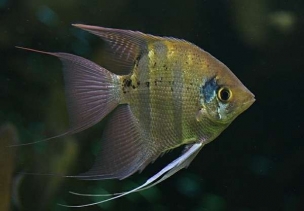 Akara
Akara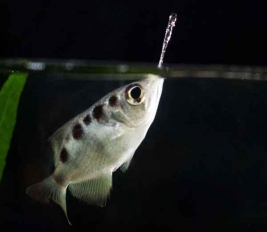 They are distinguished by the ability to spray water onto land or into the air in order to knock down and subsequently eat the insects that they feed on.
They are distinguished by the ability to spray water onto land or into the air in order to knock down and subsequently eat the insects that they feed on.
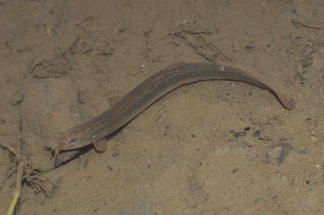 Very small scales... There are antennae. Most bottom fish, find food for themselves at the bottom.
Very small scales... There are antennae. Most bottom fish, find food for themselves at the bottom.
In addition to breathing with gills, they are able to assimilate oxygen from water through the skin, as well as swallowing atmospheric air into the intestines (excl. Balitorovs).
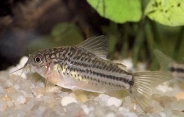 Moth corridor
Moth corridor These catfish are able to breathe atmospheric air. Feed on the bottom, aquarium orderlies.
Peaceful and non-territorial. Easy to maintain and reproduce. Most are small (up to 6 cm).
Most novice aquarists are interested in one simple, but the main question for them - which ones exist the most unpretentious and easy to keep aquarium fish, on which it would be possible to "fill your hand", or which could be looked after without any problems even by children in kindergarten or at school.
Without pretending to any special achievements in the field of fish breeding or hybridization, with some simplifications, we can well designate the five most unpretentious fish in keeping. The main criteria for this unpretentiousness are based on the attitude of the fish we are considering to the following parameters:
- the volume of the aquarium,
- water (quality and chemical characteristics),
- temperature.
For the successful keeping of many species of fish, these three indicators are critical - either they need a volume of two hundred liters or more, or they need to prepare soft or hard water, or maintain its temperature at a level of at least +30 degrees or not more than +24.
Unpretentious fish will almost do not care where to live - if only there is water (note: it is clear that we are not talking about completely spoiled cold or hot water where the existence of any life is extremely problematic).
So, we offer our hit-parade of the easiest to keep the inhabitants of the aquarium.
1. Labyrinth fish - cockerel and macropod .
These fish are, perhaps, the leaders in unpretentiousness - they can even live in a liter jar at room temperature, they do not need a compressor to provide water with oxygen (fish breathe atmospheric air).
However, there is one BUT - both males and macropods have a rather vicious character. Males strongly conflict with each other, which may well lead to the death of the weakest rival. In addition, these fish (especially macropods) love to pinch the end of their long fins from their neighbors. But if you keep them separately, then cockerels and macropods do not bring special trouble to their owners.
So, all that is needed when keeping cockerels or macropods is an aquarium of five to ten liters, water (boiled or settled from the tap), soil (you can do without it), plants (live or artificial), food (live or artificial), given to the fish once a day. Once every two weeks, the water must either be replaced (thirty percent of the total volume), or topped up with fresh water instead of evaporated.
2. Peciliaceae - guppy , swordsmen and platies.
They are very unpretentious viviparous fish... But an important clarification should be made: we are not talking here about purebred species, which are rather capricious in keeping.
To keep a school of 5-10 adult fish, an aquarium of 10-30 liters with a settled tap water with a temperature in the range of 24-27 degrees, with soil and plants, a compressor is very desirable, although not required.
You can feed the fish with dry food, but it is better to give small live food or granulated artificial food. Once a week, you need to either change the water (twenty percent of the total), or add fresh water to replace the evaporated one.
Without much effort, these fish reproduce in the aquarium, even without the participation of the aquarist - if only there is somewhere to hide after birth for newborn fry (for example, in floating plants such as elodea or hornwort).
In a twenty-liter aquarium, the guppy population can reach several dozen pieces. At a large number fish in a small aquarium, a compressor is required.
3. Catfish corridors - panda, speckled, golden.
Like labyrinths, these fish can breathe atmospheric air, which makes the presence of a compressor optional. Corridors are completely peaceful fish, they can live in small aquariums of 30-50 liters. It is advisable to change water for them once a week (20-30 percent of the total). Catfish are fed with small live and artificial pelleted feed.
4. Danio rerio is a nimble and amusing schooling fish that will enliven any aquarium with its bustle. A flock of five to ten zebrafish can be planted in a ten-liter volume.
You can feed the fish with small live food, they eat flake-like artificial very well. It is advisable to change water once a week (10-20 percent of the total). A compressor is highly desirable.
5. Black-striped cichlazoma- a fish that can be recommended to people who want to place more or less large fish in their aquarium. This cichlid can live in an aquarium with a volume of 50 liters and more (the size of adult fish usually does not exceed 8-10 centimeters).
Black-striped cichlazomas rarely get sick, do not require special conditions of detention. But it should be borne in mind that they, like most cichlids, are territorial fish that form well-established pairs. Based on this, schooling fast fish should be planted in the aquarium for them, which are not competitors for cichlazes in search of a nest.
The soil in an aquarium with black-striped cichlazomas should be in the form of medium-sized gravel, plants are either hard-leaved or artificial. Water change once a week (10-20 percent of the total), a compressor is required, a pump filter is desirable.
At the end of our story, we will make a reservation that, despite their unpretentiousness, all participants in our hit parade of the simplest aquarium fish to keep will feel good and live the entire period measured by nature only in clean and well-groomed aquariums, which is the main task of the aquarist. Otherwise, even the most unpretentious fish will not last long, alas.